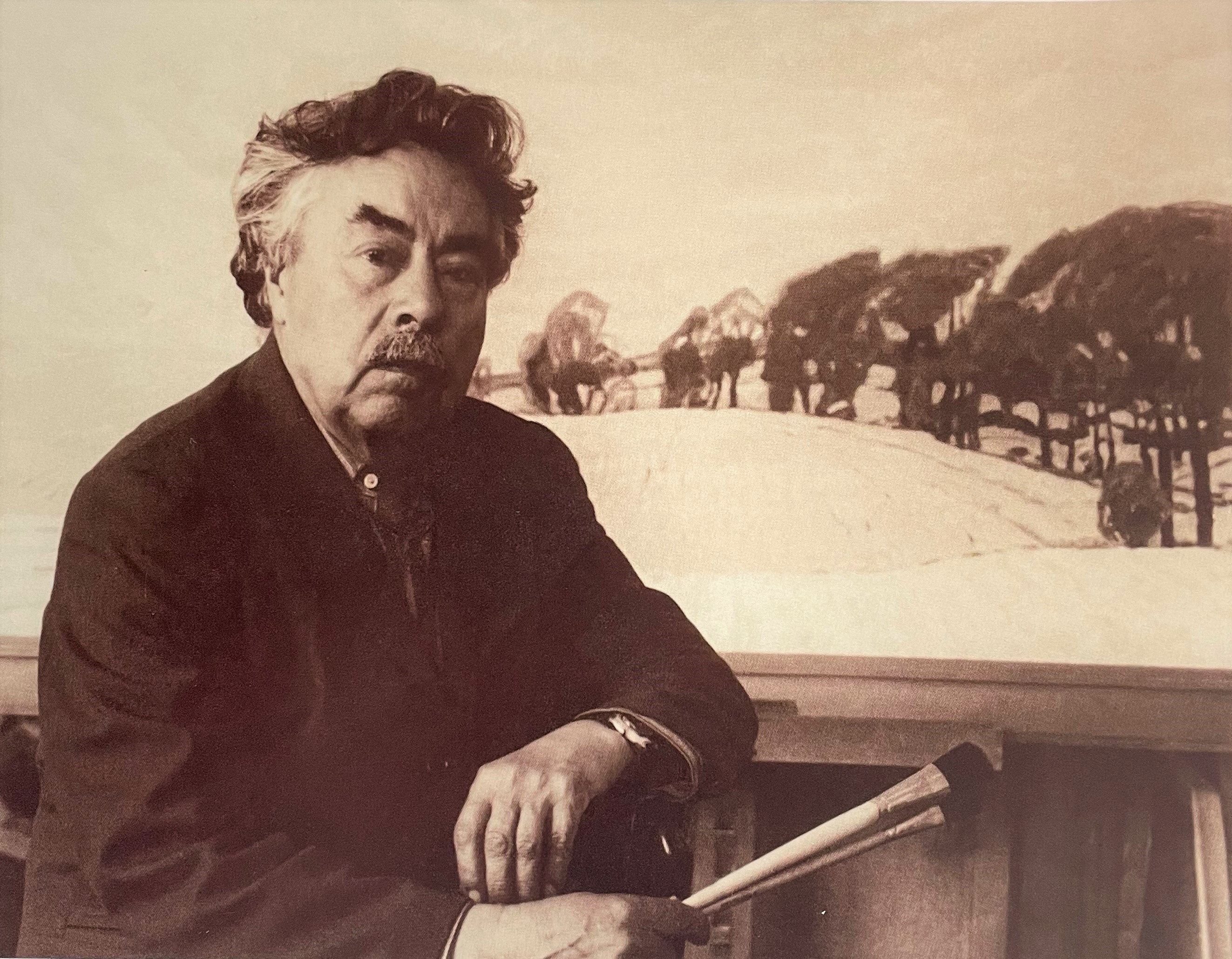
Nikolai Timkov
At his 1993 exhibition, the year of his passing, Nikolai Timkov, one of the most important Russian landscape painters of the 20th Century, revealed himself as a deeply sympathetic artist. He was viewed as a composer arranging colors whose sounds vividly echo symphonies by Kalinnikov and Borodin. The exhibition celebrated his life’s work, as he died shortly afterwards. This last show was the monumental summation of an honored painter. The... Show More
At his 1993 exhibition, the year of his passing, Nikolai Timkov, one of the most important Russian landscape painters of the 20th Century, revealed himself as a deeply sympathetic artist. He was viewed as a composer arranging colors whose sounds vividly echo symphonies by Kalinnikov and Borodin. The exhibition celebrated his life’s work, as he died shortly afterwards. This last show was the monumental summation of an honored painter. The public in attendance was shaken with the integrity and wholeness of his artistic outlook, his perceptions, and his consummate spiritual awareness. It signified the emergence of a classic Russian artist whose works are viewed as those of a highly distinguished and original master.
Born in on the steppes of temperate southern Russia in 1912, Nikolai became a student at the Rostov Art College in 1927 and graduated in 1930. He then traveled to Moscow where he attended the Academy of Arts at the invitation of famous academician and painter, Isaak Brodsky. Brodsky’s influence bound him to the best traditions of Russian art of the late 19th and early 20th Centuries. Timkov graduated in 1939 as a professional painter and then, in accordance with the law, was immediately called up for military service with the Russian Navy, serving until 1946. His service to his country took him through World War II.
Military service and the war behind him, Timkov’s career was highlighted by several major one-man exhibitions prior to his last. The shows represented extended periods of his artistic work and became important stages of his growth both spiritually and artistically. Throughout this time, he formed his unique approach to landscape painting, which has become known as “the Timkov style”, discernible through his compositional peculiarities, artistic solutions, palette and characteristic brush work.
Timkov traveled extensively through west central Russia and was particularly fond of the landscape there. His landscapes, always concrete in detail, are also generalized by symbolic meaning. His temples and monasteries tower grandly towards the heavens and are secure structures full of pride seeming to crown the beauty of the landscape. Villages and wooden huts appear to cling to Mother-Earth as if drawing warmth from her. They become blurred against the background of trees and bushes as though trying to wrap themselves in the snow. His keen eye allows us to be aware of every tree, branch and twig, whether hidden beneath the lace of snowflakes, covered in the transparent ornament of spring foliage, or standing in severe winter nakedness.
Nikolai Timkov, sometimes referred to as the “Dean of Post-War Russian Impressionism”, is hung in some of the most exclusive public and private collections throughout Russian, the United States and Western Europe.
PUBLIC COLLECTIONS and PRINCIPAL EXHIBITIONS
PUBLIC COLLECTIONS
Abramtsevo: State Museum of History, Arts, and Literature.
Beloretsk: Beloretsk Picture Gallery
Berdiansk: I.I.Brodsky Art Museum
Briansk: Art Museum of the Briansk Region
Vladimir: Vladimir-Suzdal State Museum of History and Architecture
Vyshnyi Volochok: Local branch of the Kalinin State Museum of History and Architecture
Gorlovka (Donetsk region): Gorlovka State Museum
Gorokhovets (Vladymir region): Museum of Local Lore, History and Economy
Izhevsk: Udmurtia Art Museum
Ioshkor-Ola: Mari Exhibition Hall
Kazan: Tataria Art Museum
Kalinin: Kalinin Picture Gallery
Comsomolsk-on-Amur: Museum of Soviet Arts
Kurgan: Kurgan Art Museum
Konstantinnivsk (Rostov region): City Art Museum
Leningrad (St. Petersburg):
State Museum of the History of Leningrad
State Russian Museum
Central Naval Museum
Popov’s Central Museum of Communications
Moscow:
Central Army Museum
Republic Center for Art Exhibitions
Tretyakov State Gallery
Moscow region: Sovkhoz Voronovo Art Gallery
Novgorod: Novgorod State Museum of History, Architecture and Art
Novokuznetsk (Kemerovo region): Novokuznetsk Museum of Soviet Art
Omsk: Museum of Arts
Oryol: State Picture Gallery
Orenburg: Museum of Arts
Rostov-on-Don:
Museum of Arts
Museum of Local Lore, History and Economy
Ekaterinburg (Sverdlovsk): Museum of Arts
Cheboksary: Chuvashi State Art Gallery
Shadrinsk (Kurgan region): Museum of Local Lore, History and Economy and various picture galleries and other institutions
Altai region: Pavlovsk Picture Gallery
Pskov region: (Novorzhev area): Vekhnyanskaya Art Gallery
Tomsk: Experimental and Production Holding
Minneapolis, Minnesota USA: The Museum of Russian Art
PARTIAL LIST of PRINCIPAL EXHIBITIONS
All-Union Exhibition Heroic Front and Home Front, State Tretiakov Gallery, Moscow, 1943.
Exhibition of young artists, dedicated to the 25th Anniversary of the Lenin Comsomol, State Tretiakov Gallery, Moscow.
First Exhibition of the Leningrad Frontline Artists, House of the Red Army, Leningrad.
First Exhibition of the Leningrad Frontline Artists, Frunze House of the Red Army, Moscow, 1943.
Second Exhibition of the Leningrad Frontline Artists, State Russian Museum, Leningrad, 1944.
Third Exhibition of the Leningrad Frontline Artists, Academy of Arts, Leningrad, 1945.
First One-Man Exhibition of Timkov’s works, Russian Federation of Artists, Leningrad Branch, 1947.
Traveling Exhibition of Leningrad Artists, House of Arts Named for K.S. Stanislavsky, Leningrad, 1948.
Retrospective Exhibition of paintings, graphics and sculpture, 1947-48, Leningrad, 1949.
Exhibition of works by Leningrad Artists, State Russian Museum, Leningrad, 1950.
Exhibition of works by Leningrad Artists, State Russian Museum, Leningrad, 1951.
All-Union Exhibition of Arts, State Tretiakov Gallery, Moscow, 1952.
Second All-Union Exhibition of Seascape Painters, Central House of the Soviet Army, Moscow, 1952.
Second One-Man Exhibition of Timkov’s works, Russian Federation of Artists, Leningrad, 1957.
Exhibition of paintings, sculpture and graphics dedicated to First All-Union Congress of Soviet Artists, USSR Union of Artists, Moscow.
Exhibition of Leningrad artists dedicated 40th anniversary of the Great October Revolution, State Russian Museum, Leningrad.
All-Union Exhibition dedicated to the same anniversary, Central Exposition Hall, Moscow.
Traveling Exhibition Petersburg-Leningrad in Prints and Lithographs by Russian and Soviet Artists from the Hermitage Collections, Novgorod, Riga and Tallinn.
Traveling One-Man Exhibition of Timkov’s works from Leningrad and Rostovon-Don, 1958.
Exhibition of paintings Forty Years of the Soviet Military Forces, USSR Academy of Arts, Moscow.
Exhibition of Leningrad Artists, Research Museum of the USSR Academy of Arts, Leningrad, 1960.
Republic Exhibition of Arts Soviet Russia, Central Exposition Hall, Moscow.
All-Union Exhibition of Arts dedicated to the 22nd Congress of the CPSU, Central Exposition Hall, Moscow, 1961.
Exhibition of Leningrad artists, State Russian Museum, Leningrad.
Regional Exhibition, State Russian Museum, Leningrad.
Exhibition of Works by N. Timkov and V. Golubev, Leningrad.
Exhibition of Works by N. Timkov and S. Neverstein, Leningrad.
Third One-Man Show, 1964. Traveling Exhibition to Moscow, Yaroslav, Krasnodor, Stravropol, Kislovodsk and Rostov-on-Don.
Leningrad During the Second World War, Ethnographic Museum of the Peoples of the USSR, Leningrad.
Exhibition of works by Leningrad artists in Finland and Turkey.
Second Republic exhibition of arts Soviet Russia, Central Exposition Hall, Moscow.
Third Republic exhibition of arts Soviet Russia, dedicated to the 50th Anniversary of the October Revolution, Central Exposition Hall, Moscow.
All-Union exhibition dedicated to above anniversary, Central Exposition Hall, Moscow.
Fourth Republic exhibition of arts Soviet Russia, Central Exposition Hall, Moscow, 1970.
Exhibition of Leningrad artists dedicated to Vladimir I. Lenin, State Russian Museum, Leningrad.
Exhibition of Leningrad artists dedicated to 25th anniversary of victory in the Second World War, Leningrad Organization of the Russian Federation of Artists, Leningrad, 1972.
Exhibition of Leningrad artists Our Contemporaries, State Russian Museum, Leningrad.
Exhibition of the Russian Federation of artists Around the Native Land, Central Exposition Hall, Moscow.
Exhibition of the Russian Federation of artists, Central Exposition Hall, Moscow, 1974.
Exhibition of Leningrad artists Around the Native Country, State Russian Museum, Leningrad.
Fifth Republic-wide exhibition Soviet Russia, Central Exposition Hall, Moscow, 1975.
Regional Exhibition of Leningrad artists Our Contemporaries, State Russian Museum, Leningrad.
All-Union Exhibition of arts Glory to Labor, Central Exposition Hall, Moscow, 1976.
One-Man Exhibition of Timkov’s works, Leningrad Branch of the Russian Federation of Artists, Leningrad.
Exhibition, The Arts of Leningrad, Central Exposition Hall, Moscow.
Republic-wide exhibition of Russian Federation artists dedicated to the 60th Anniversary of the October Revolution, Central Exposition Hall, Moscow, 1977.
Exhibition On Lenin’s Road dedicated to the October Revolution, Central Exposition Hall, Moscow.
Exhibition of the Russian Federation of artists Art Belongs to the People, Central Exposition Hall, Moscow.
All-Union art exhibition The Blue Roads of Russia, Central Exposition Hall, Moscow, 1979.
All-Union art exhibition of Leningrad artists dedicated to 110th anniversary of V.I. Lenin, Central Exposition Hall, Moscow, 1980.
Sixth Republic-wide exhibition Soviet Russia, Central Exposition Hall, Moscow.
Petersburg-Petrograd-Leningrad in the works of Soviet and Russian Artists, Central Exposition Hall, Leningrad.
All Russian art exhibition Around the Native Country, Central Exposition Hall, Moscow, 1981.
Exhibition of Leningrad artists Our Contemporaries, Central Exposition Hall, Leningrad.
One-Man Exhibition of Timkov’s works, USSR Union of Artists, Yuri A. Gagarin Air Force Academy, Star City, Moscow, 1982.
Exhibition dedicated to 50th anniversary of the Leningrad branch of the Russian Federation Union of Artists, Central Exposition Hall, Leningrad.
Exhibition dedicated to the 60th anniversary of the formation of the USSR, Central Exposition Hall, Leningrad.
Exhibition A Land of Inspirations, Kalinin.
Exhibition The Blue Roads of Russia, Central Exposition Hall, Moscow, 1983.
Exhibition of Leningrad artists In the Time of Courage, State Russian Museum, Leningrad, 1984.
Exhibition, The Battle for Leningrad, Central Exposition Hall, Leningrad.
Exhibition of Leningrad artists dedicated to the epic battle for Leningrad, Leningrad branch of the Russian Federation Union of Artists, Leningrad.
Exhibition of Leningrad artists, Central Exposition Hall, Leningrad.
Exhibition 60 Years with Lenin’s Name, Museum of Leningrad History, Leningrad.
Exhibition Our Leningrad, Central Exposition Hall, Leningrad.
Exhibition dedicated to the 100th anniversary of the Academy Dacha, Kalinin.
Exhibition 40 Years of Great Victory, Central Exposition Hall, Leningrad, 1985.
Regional exhibition, Central Exposition Hall, Leningrad.
Exhibition Our Contemporaries, Central Exposition Hall, Leningrad, 1986.
Exhibition Leningrad’s Artists for the 70th Anniversary of the Great October, Central Exposition Hall, Leningrad, 1987.
Sixth one-man exhibition, 1993 Union of Artists, Saint Petersburg.
One-man exhibition, Modernism Gallery, San Francisco, California, 1998.
Organization of American States, Washington D.C., 2001
Russian Cultural Center, Washington D.C., 2001
Exhibition, Smithsonian Institution, Washington, D.C., 2005
Painting the Heart of Russia; Nikolai Timkov’s Sustaining Vision, Meridian International Center, Washington, D.C., 2008
BIBLIOGRAPHY
L.N. Gumilev, Drevnyaya Rus i Velikaya Step (Ancient Russia and the Great Steppe), Moscow: Mysl, 1989.
The literature on the Academic Dacha is extensive. The fullest documentary coverage is provided by I. Romanycheva, Academicheskaya dacha (The Academic Dacha), Leningrad: Khudozhnik RSFSR, 1975. The remaining publications are of a more popular nature, including: A. Berezin, Solnechnyy. Khudozhestvennaya galereya (Solnechnyy. Art Gallery), Leningrad: Khudozhnik RSFSR, 1982; V.M. Sidorov, Kray udozkhnoveniya (The Land of Inspiration), Leningrad: Khudozhnik RSFSR, 1986. None of the publications, even the artist V. Sidorov’s undoubtedly excellent book (in literary terms), are free of the pressure of official orthodox concepts of the development of Russian art, which is hardly surprising bearing in mind the time in which they were published.
During Timkov’s lifetime; 1912-1993, there were no publications devoted to his work, save for an insignificant exhibition booklet. The artist’s legacy was similarly unlucky-it was on the verge of physical destruction after the artist’s death and was only preserved thanks to the efforts of the former Pushkin Collection, now the Timkov Collection. It was part of this project that the first monograph on the artist was published; The Seasons of Nikolai Efimovich Timkov: Master Russian Impressionist, Albuquerque, New Mexico: The Pushkin Collection, 1998.
Artists of Leningrad: A collection of articles/Compiled by I.N. Viunova. Leningrad, 1977.
The subject is covered in a special work. See G. Yu. Sternin, “Abramtsevo: ot ‘usadby’ k ‘dache” (Abramtsevo: From the “Estate” to the “Dacha”0, in Russkaya khudozhestvennaya kultura vtoroy poloviny XIX –nachala XX veka (Russian Artistic Culture of the Second Half of the 19th to Early 20th Centuries), Moscow: Sovietskiy khudozhnik, 1984.
D.S. Likhachev, “Zametki o russkom” (Notes on Things Russian), Novyy mir (New World), 1980, no.3, p.26.
V.V.Rozanov, Sredi khudozhnikov (Amidst Artists), Moscow: Respublika, 1994, p.214.
V. Kruglova and V. Leniashina, Russian Impressionism, State Russian Museum, Palace Editions,2000.
A number of Western authors ser Abramtsevo alongside Barbizon and Worpswede as a leafing late-nineteenth-century artists colony. In each case artists settled in the country and worked in the open air, yet Abramtsevo was above all a noble estate, one of those “cultural nests” where the owners were fully conscious of their role not merely as welcoming hosts but as organizers of cultural life and of specific and theatrical projects in which artists were specially invited to take part. Thus Savva Mamontov, the famous industrialist and patron who purchased Abramtsevo, pressured his guests into the realization of cultural programs - the revival of folk crafts, the collecting of folk art, the development of Russian applied art in a local version of the Art Nouveau style. The element of organization, of centralized artistic activity, sets this center apart from Western artists colonies, founded as they were on the principles of self-organization and individualism.
Shekhter, T.Ye. Unofficial Art of St. Petersburg (Leningrad) as a Phenomenon of Culture of the Second Half of the 20th Century. St. Petersburg, 1995.
Roitenburg, Olga. Has Anyone Really Remembered that We Had Been… Moscow. Galart, 2004.
The Wandereers: a group of artists set up in 1870 what was called the Fellowship of Traveling Art Exhibitions. They rejected the limitations of academic painting and reached increased “critical realism.”
G.G. Pospelov, Russkoe iskusstvo XIX veka. Ocherk (Russian 19th-Century Art. Essays), Moscow: Iskusstvo, 1997, p.254.
“Motiv’priyuta’ v iskusstve kontsa XIX – nachala XX veka” )The Motif of the “Refuge” in Art of the Late 19th and Early 20th Centuries), in Pospelov, op. cit, pp.254-275.
Cullern Bown, Matthew. Socialist Realist Painting. New Haven and London, 1998.
Borovsky, A. Artists of Leningrad (joint authors). Kiev. Mistetstvo, 1986.
Union of Russian Artists, a 1903-1923 organization of Moscow and Petersburg/Petrograd artists. The works of the Muscovites were dominated by lyrical plein air landscape painting, and the credo of the whole union is associated with this approach.
Art of the Soviets. Painting, sculpture and architecture in one-party state / Edited by Mathew Cullern Bown and Brandon Taylor. Manchester and New York: Manchester University Press, 1993.
“Artists arrived at the Academic Dacha thus: by train to the Akademicheskaya Station. At the station they were awaited in the old days by carts with horses, and in modern days by car or bus. Later they introduced a boat from Vysnyy Volochok, and even later they put asphalt on the road from town and put a bus into action,” recalled the artist’s son. V.N. Timkov, “Zapiski” (Notes), MS, author’s archive.
Punin. Russian and Soviet Art. Moscow, 1976.
The Masters of Analytical Art existed from 1925-1932 formed of students of Pavel Filonov (1883-1941), creator of an original creative concept with its basis in the “principle of madeness” and the analysis of objective form.
Diogot, Ekaterina. Russian Art of the 20th Century. Moscow. Trefoil, 2000.
On the phenomena of the landscape during the siege of Leningrad see A. Borovsky, “iskusstvo erioda blokady kak istoriko-khudozhestvennaya problema” (Art of the Blockade Period as a Question of Art History), in the anthology Muzey (Museum), issue 8, Moscow. Sovetskiy khudozhnik, 1987.
Sochineniya Iosifa Brodskogo (The Works of Joseph Brodsky), vol. 5, St. Petersburg, 1999, p.26.
On A. Lapirov, see A. Borovsky, “A. Lapirov,” introductory article to the exhibition catalogue A. Lapirov, Leningrad: Khudozhnik RSFSR, 1978.
V.N. Timkov, “Zapiski.”
Borovsky, A. The Role of the Collector in Contemporary Russian Culture and Russian Art Collections in the West. In : Forbidden Art. The Postwar Russian Avant-garde. D.A.P., N-Y, 1998.
Rozalia Rozina, “Shkola masterstva” (School of Skills), MS, author’s archive.
Abram Efros, Dva veka russkogo iskusstva (Two Centuries of Russian Art), Moscow: Iskusstvo, 1969, p.252.
On so-called “Reflexive Impressionism” see E.V. Basner, Zhivopis K.S. Malevicha pozdnego peioda (K.S. Malevich’s Paintings from His Late Period), summary of postgraduate thesis, St. Petersburg, 1999.
Show LessArtworks in Our Collection
-
January in Staraya Ladoga
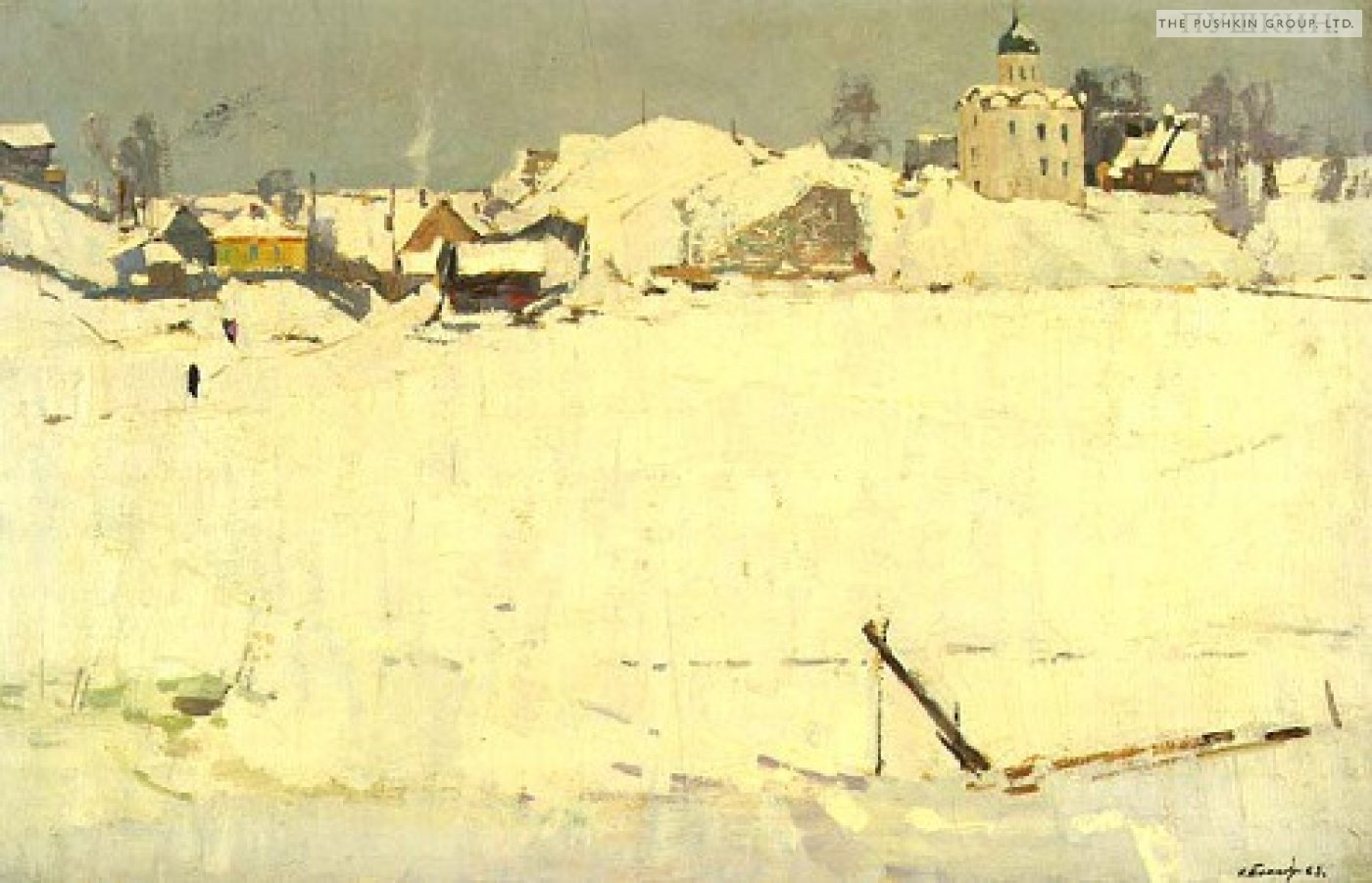
1963 / Oil on Panel / 19 x 29" -
Snowy Saturday
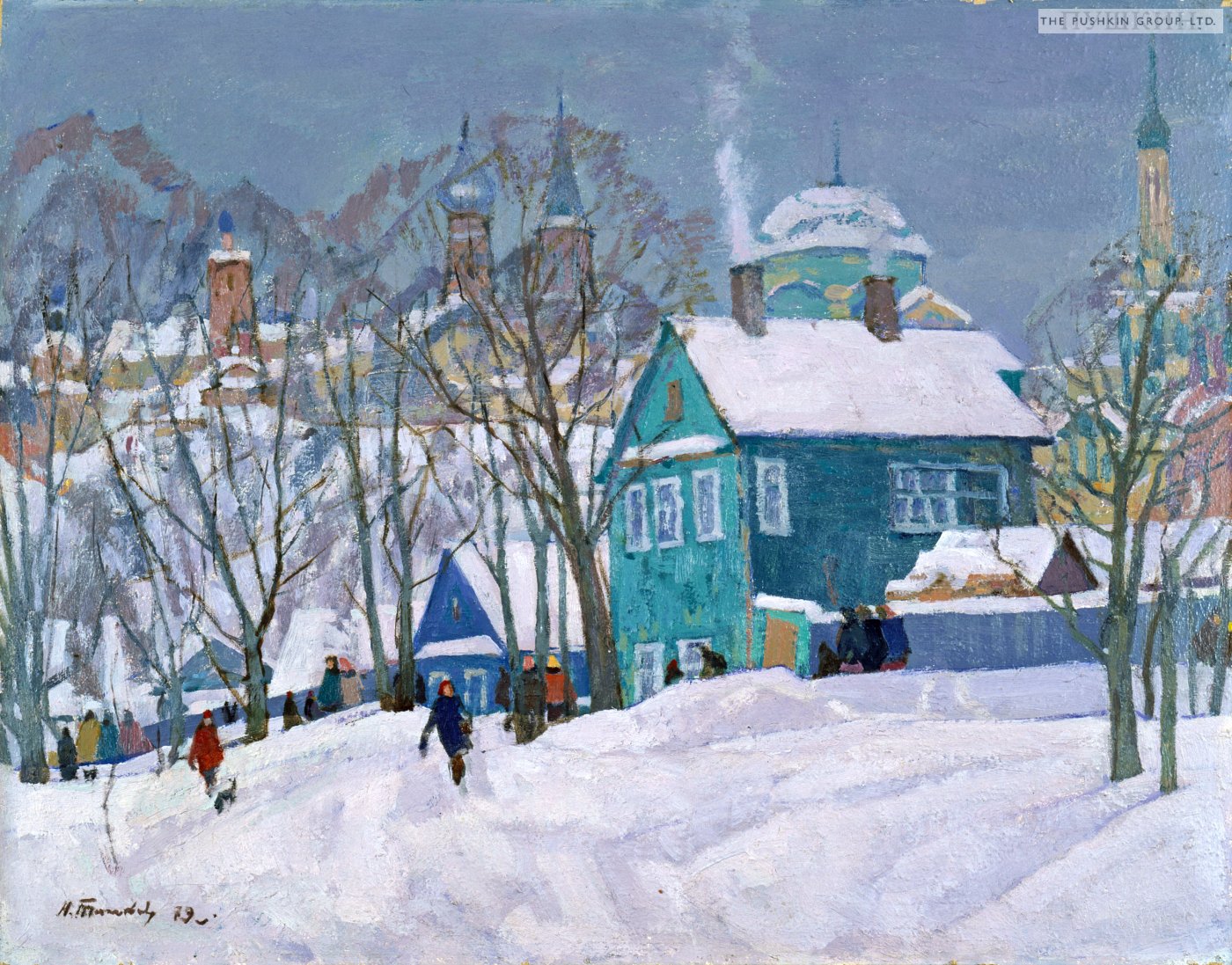
1979 / Oil on Panel / 20" x 25" (50cm x 63cm) -
Birch Knoll
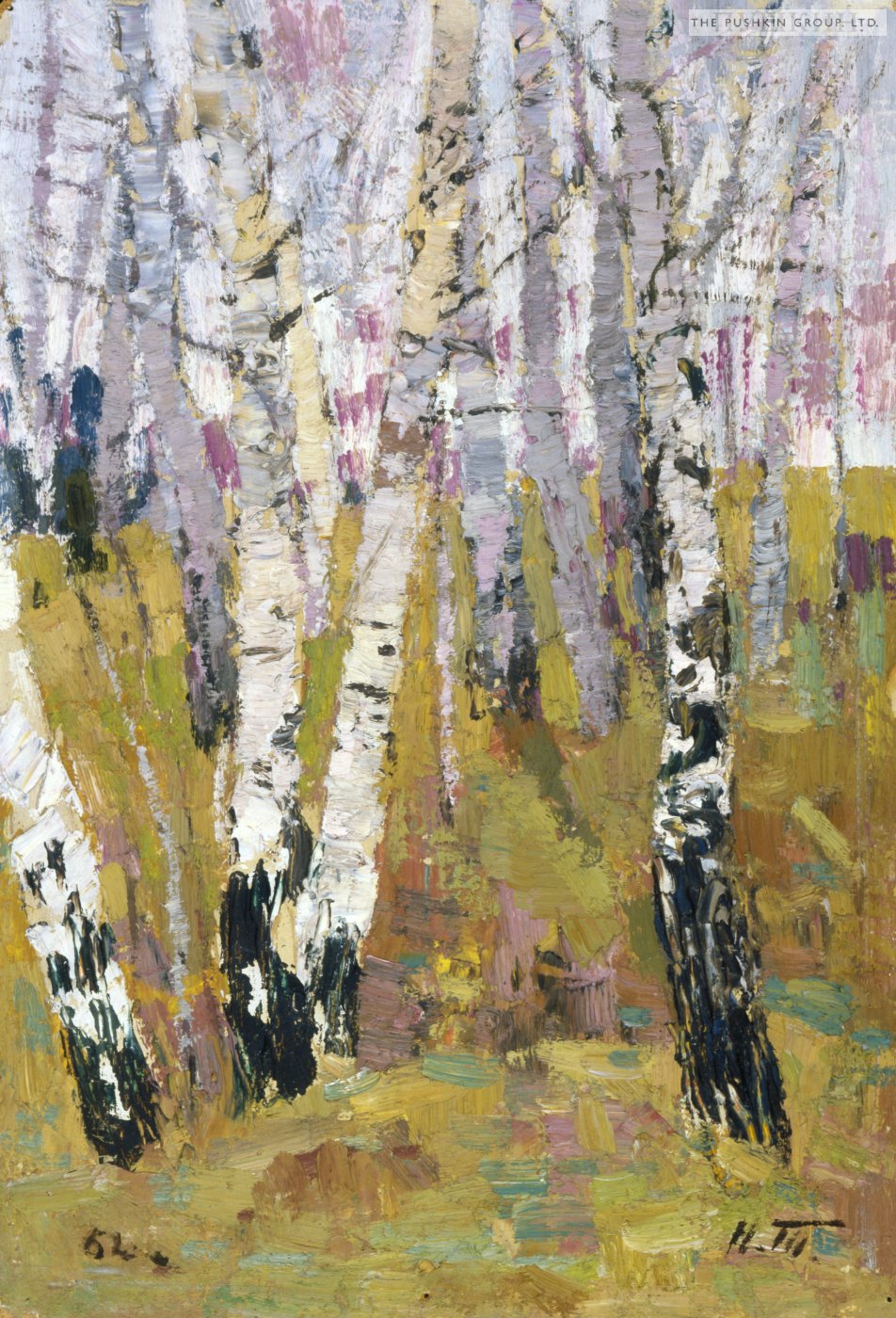
1962 / Oil on Panel / 10" x 7" (25cm x 18cm) -
Banks of the Oredesh
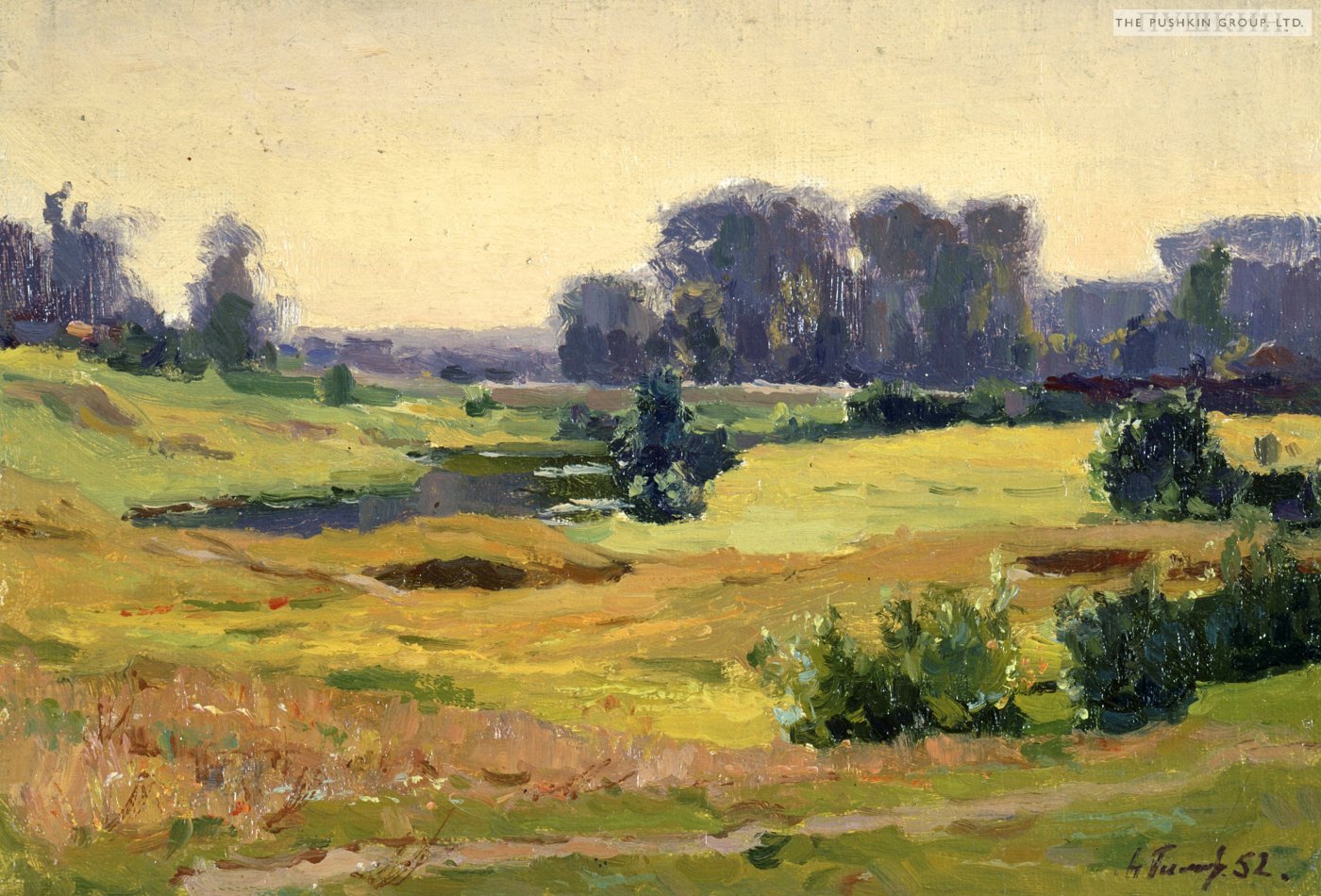
1952 / Oil on Panel / 6.00" x 9.00" (15cm x 23cm) -
Sunlit Dacha
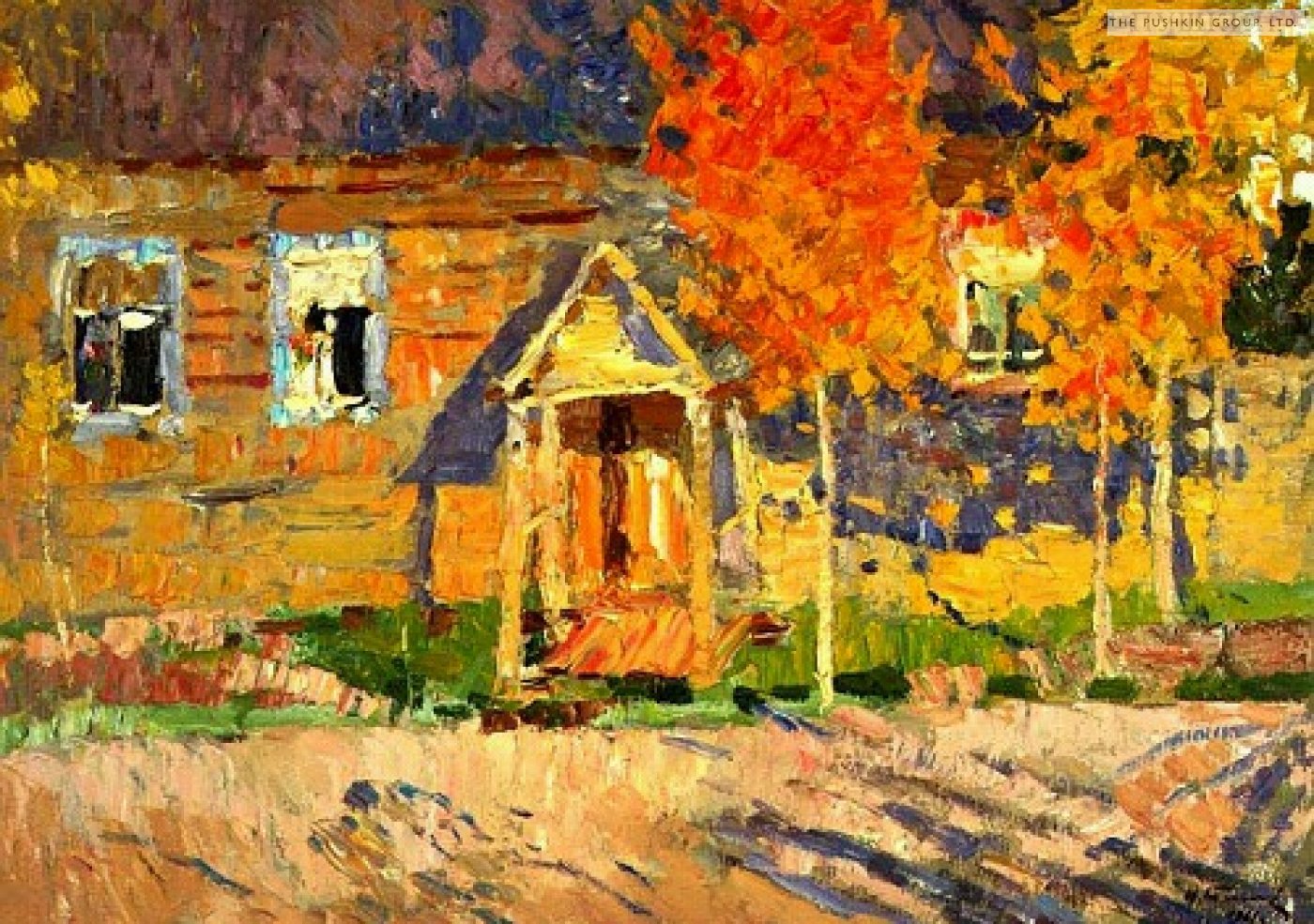
1961 / Oil on Panel / 21 x 29" -
Flowering Apple Orchard
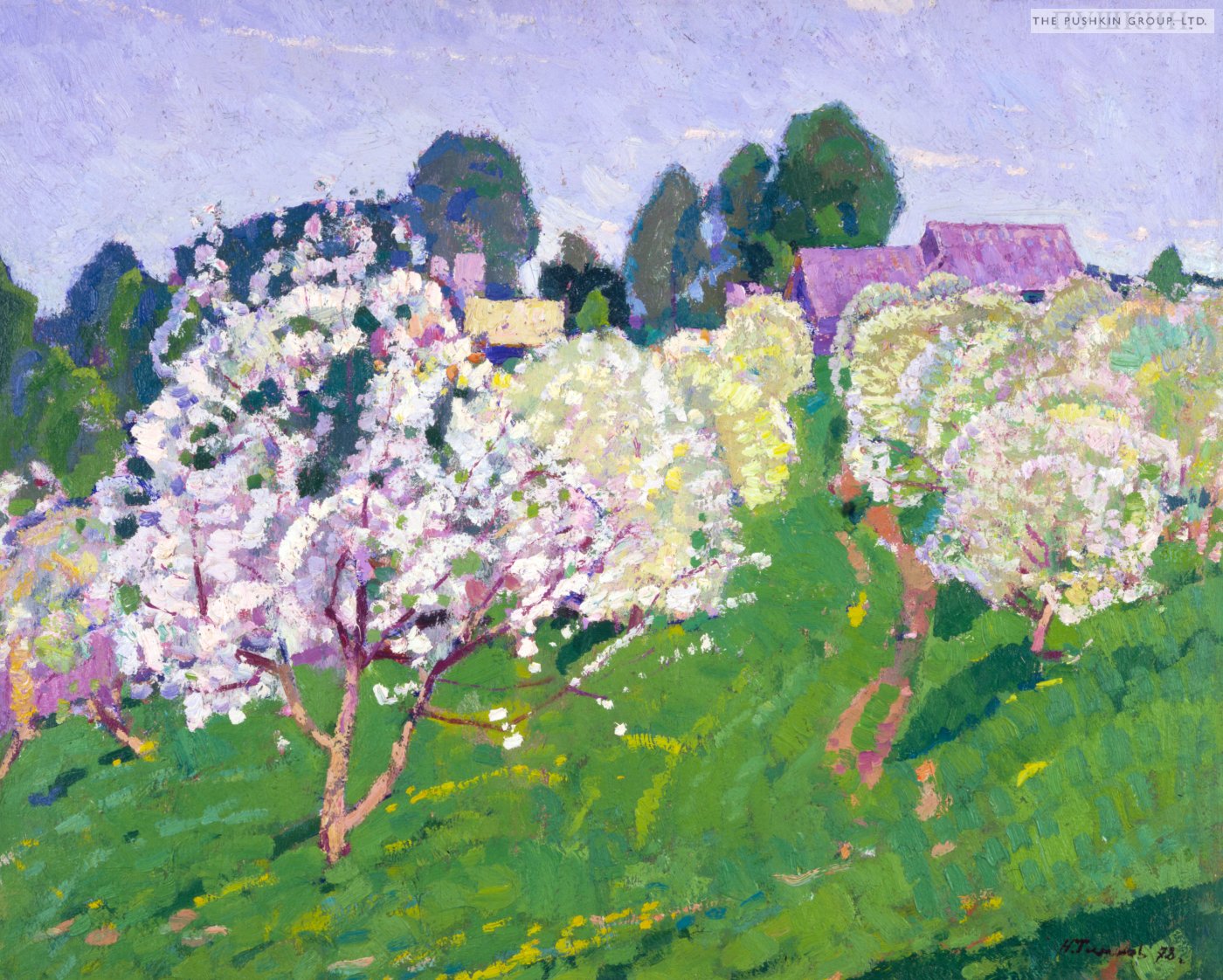
1978 / Oil on Panel / 20" x 24" (50cm x 60cm) -
Winter Sunset
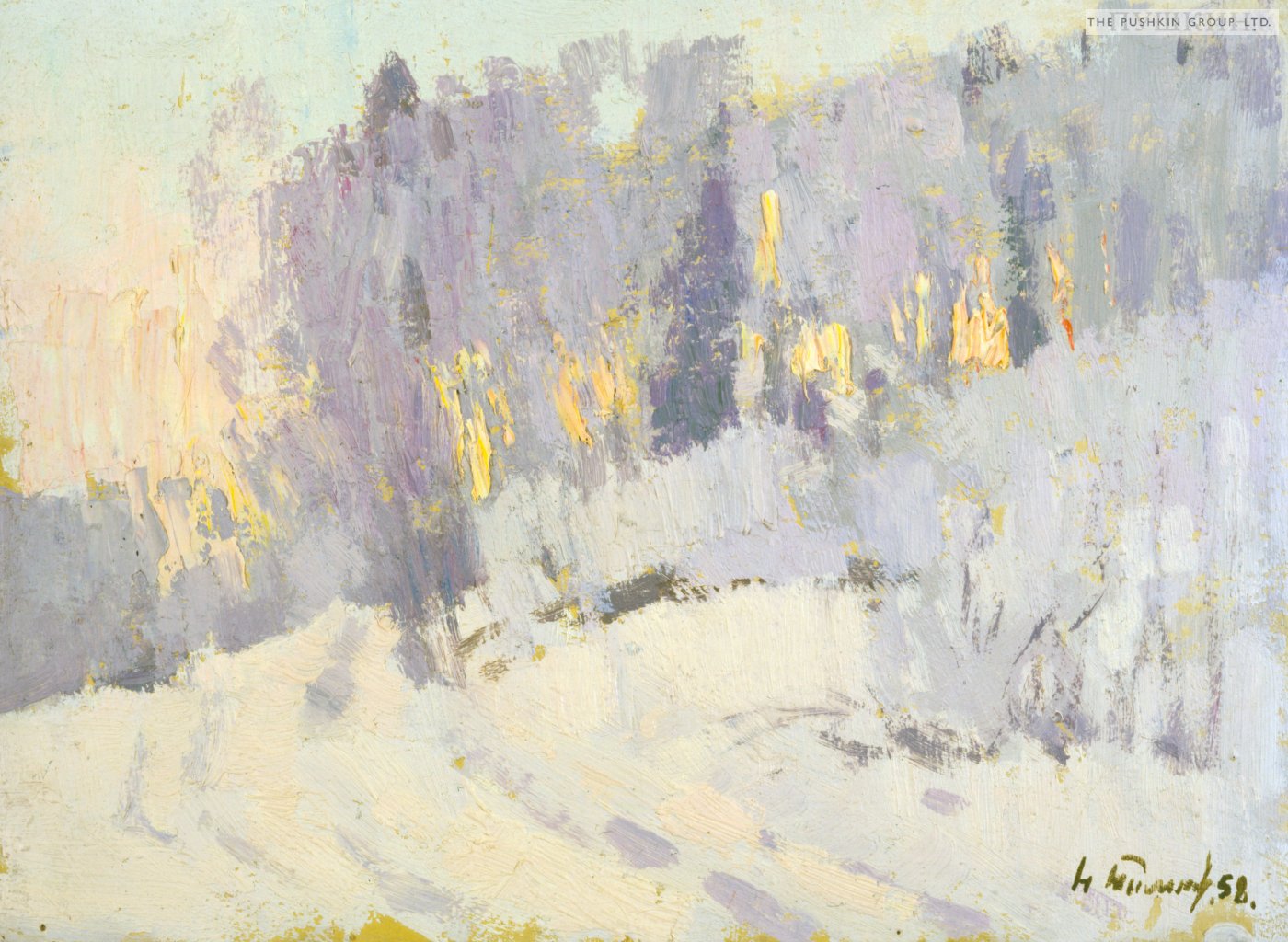
1958 / Oil on Panel / 8 x 10" (20 x 30cm) -
Autumn Spirit
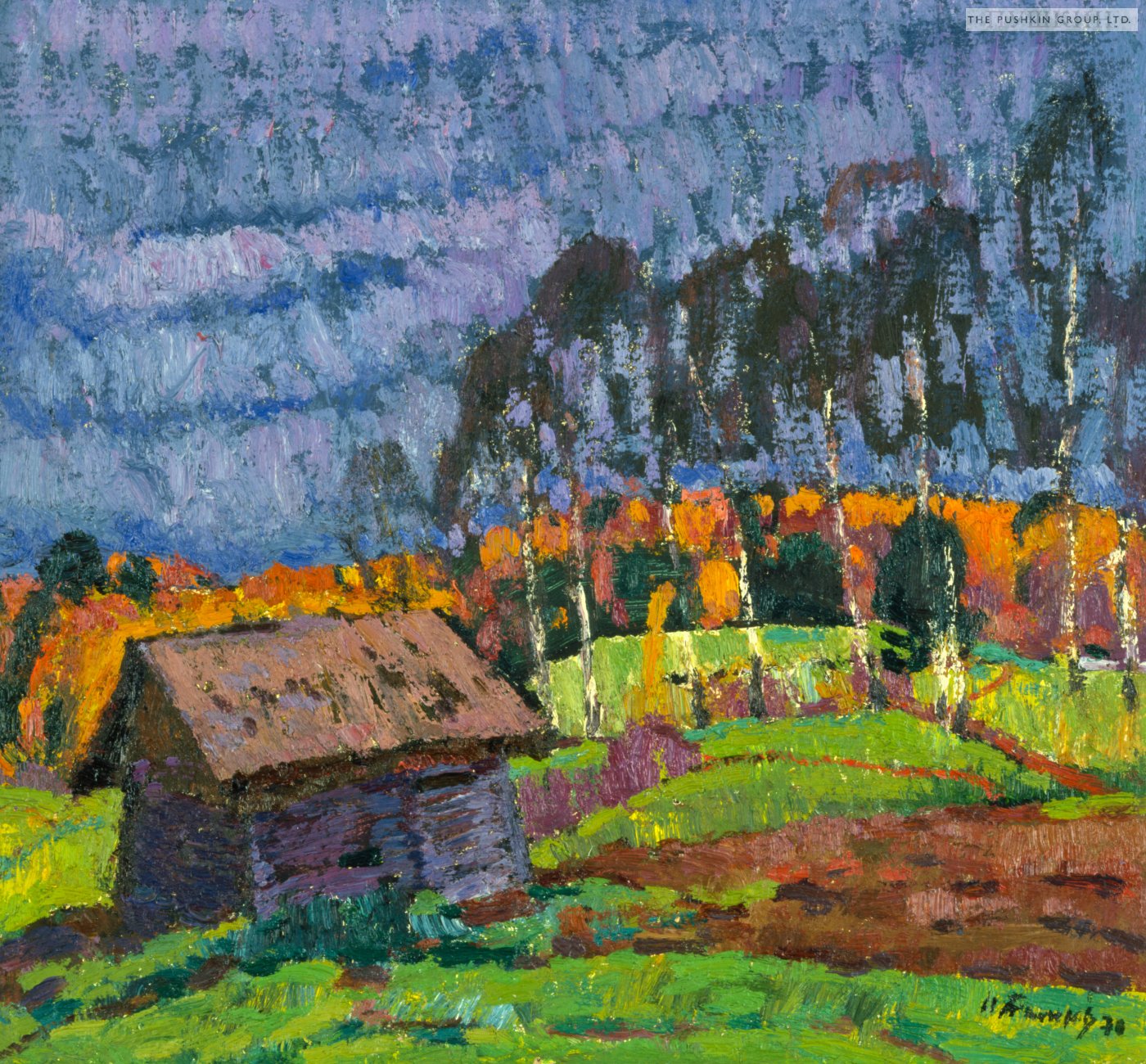
1970 / Oil on Panel / 10 x 10" -
Rustic Creek

1963 / Oil on Panel / 12 x 11" -
November Waters
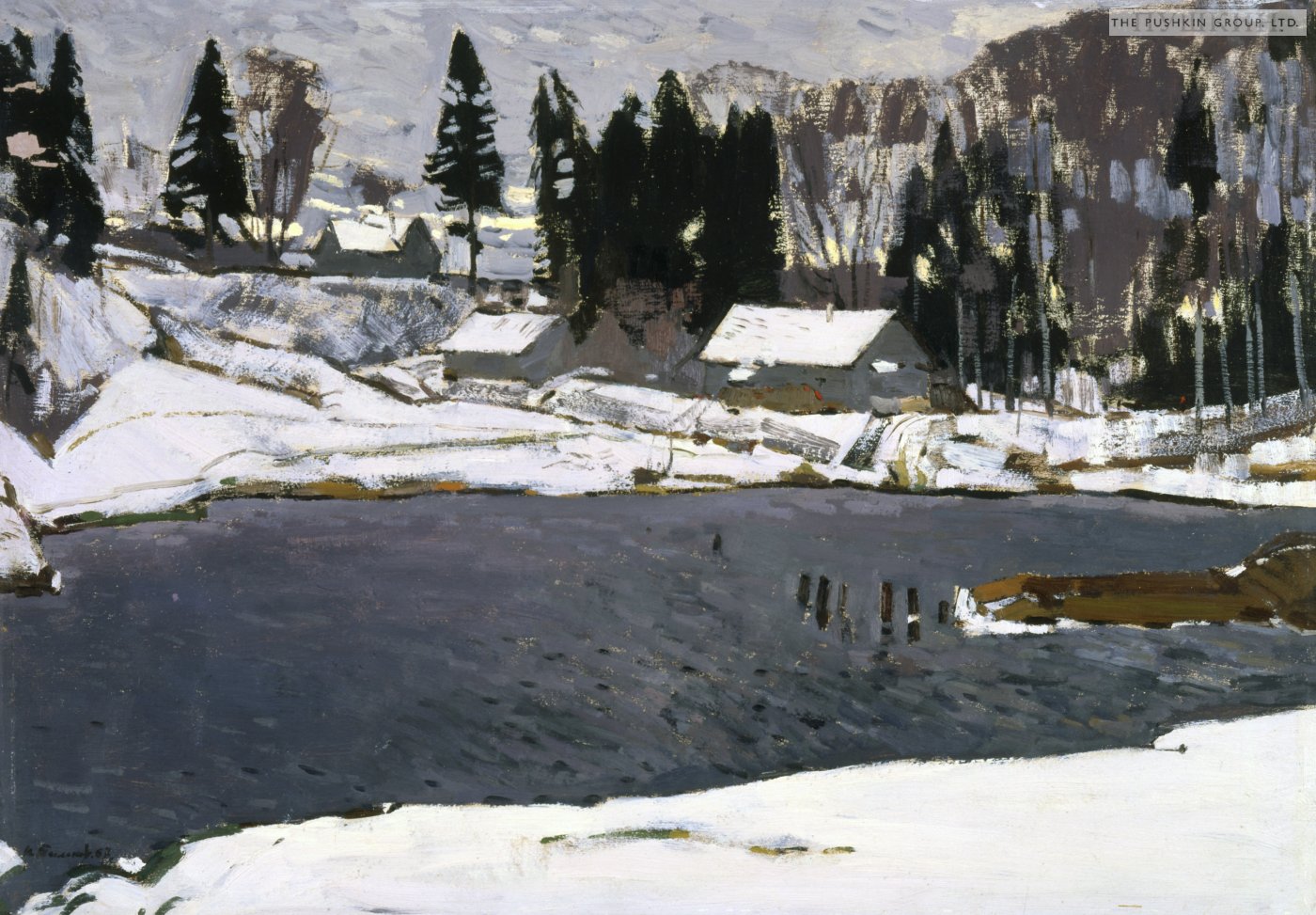
1967 / Oil on Panel / 20.00" x 29.00" (50cm x 73cm) -
Snow Laden Orchard
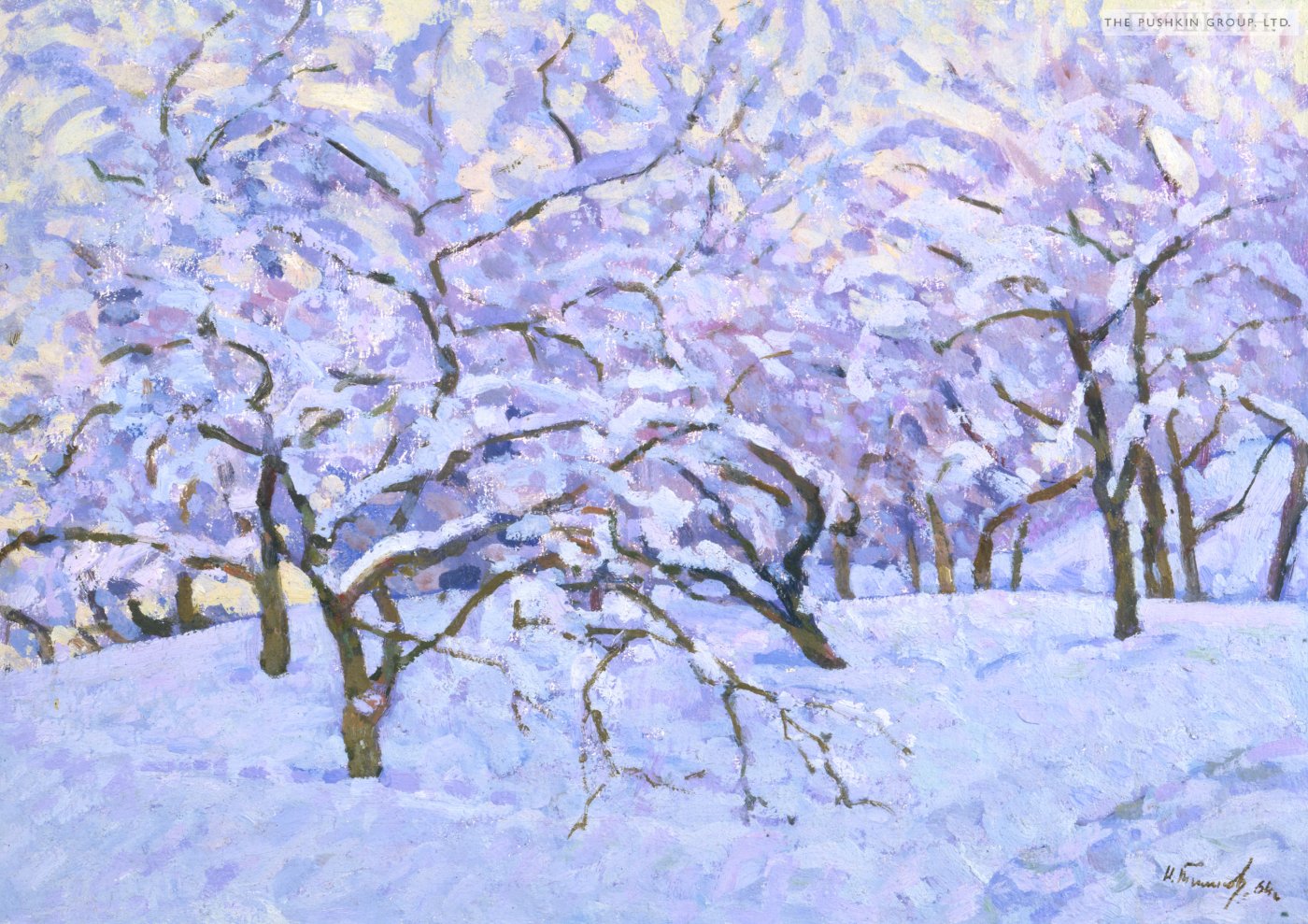
1964 / Oil on Canvas / 14" x 20" (35cm x 50cm) -
Birch Trees
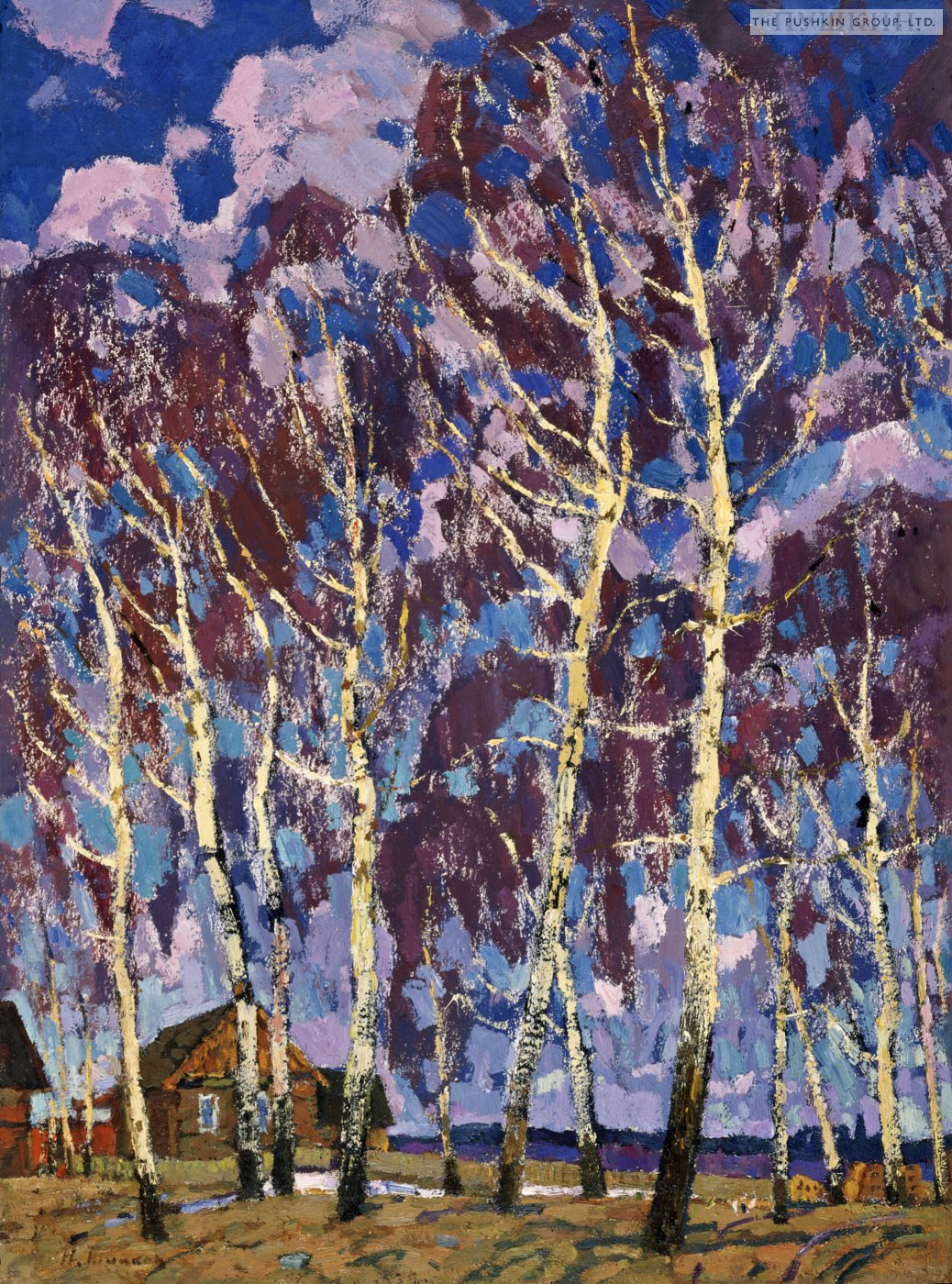
1970 / Oil on Panel / 27" x 21" (68cm x 53cm) -
Afternoon in Rostov
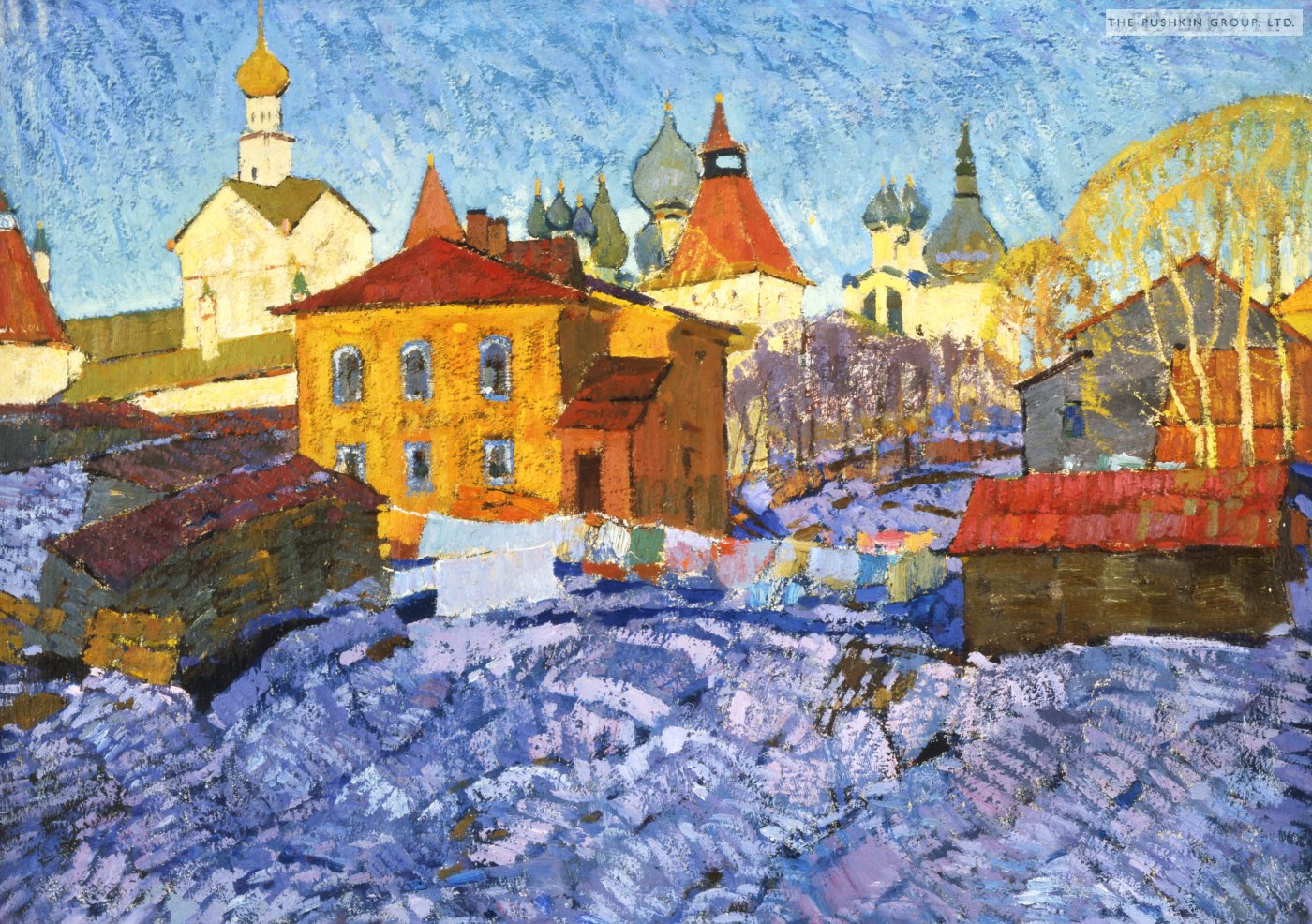
1970 / Oil on Panel / 20 x 28" (50cm x 70cm) -
The Crossing
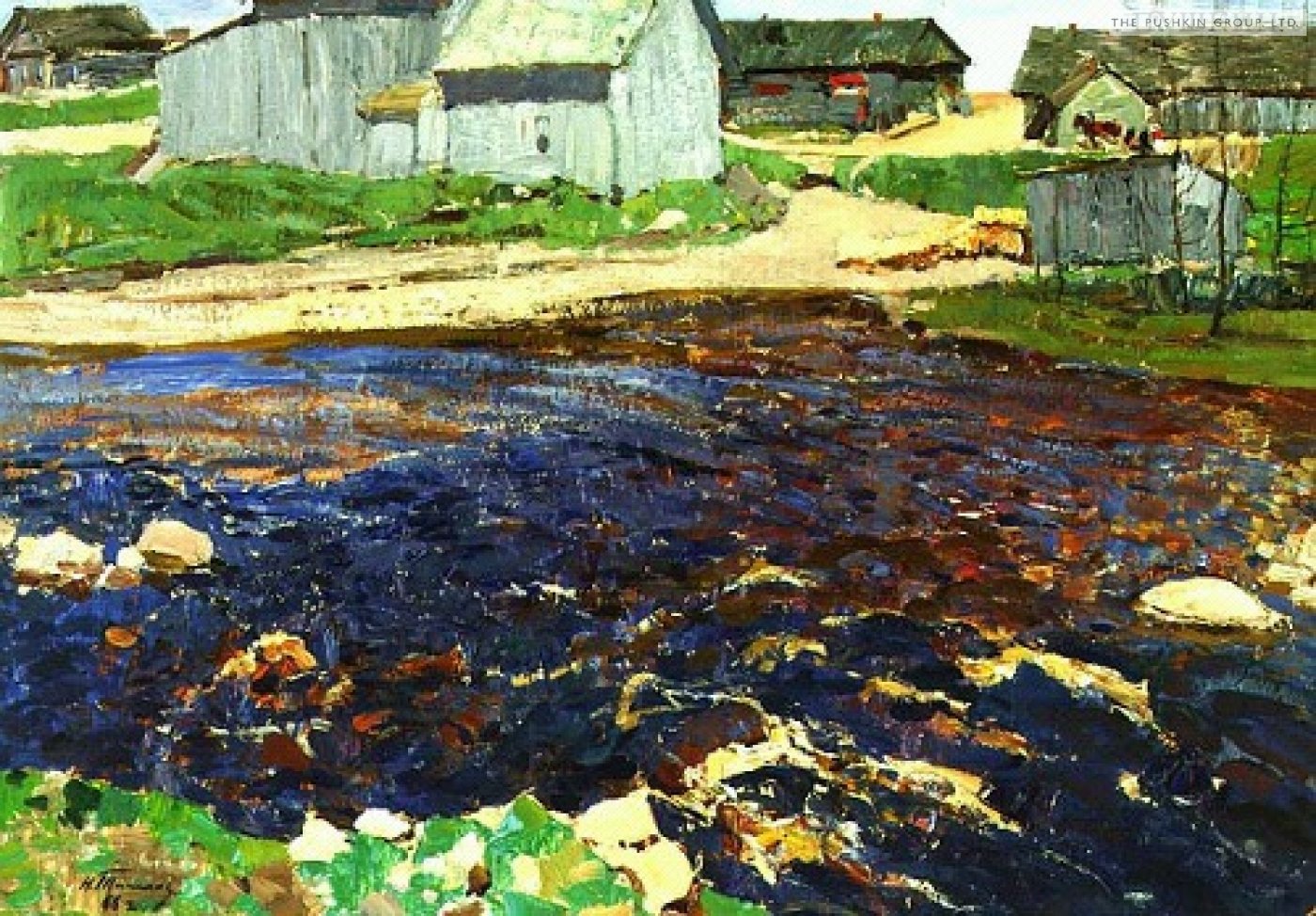
1966 / Oil on Panel / 19 x 28" -
Cottage in Krimea
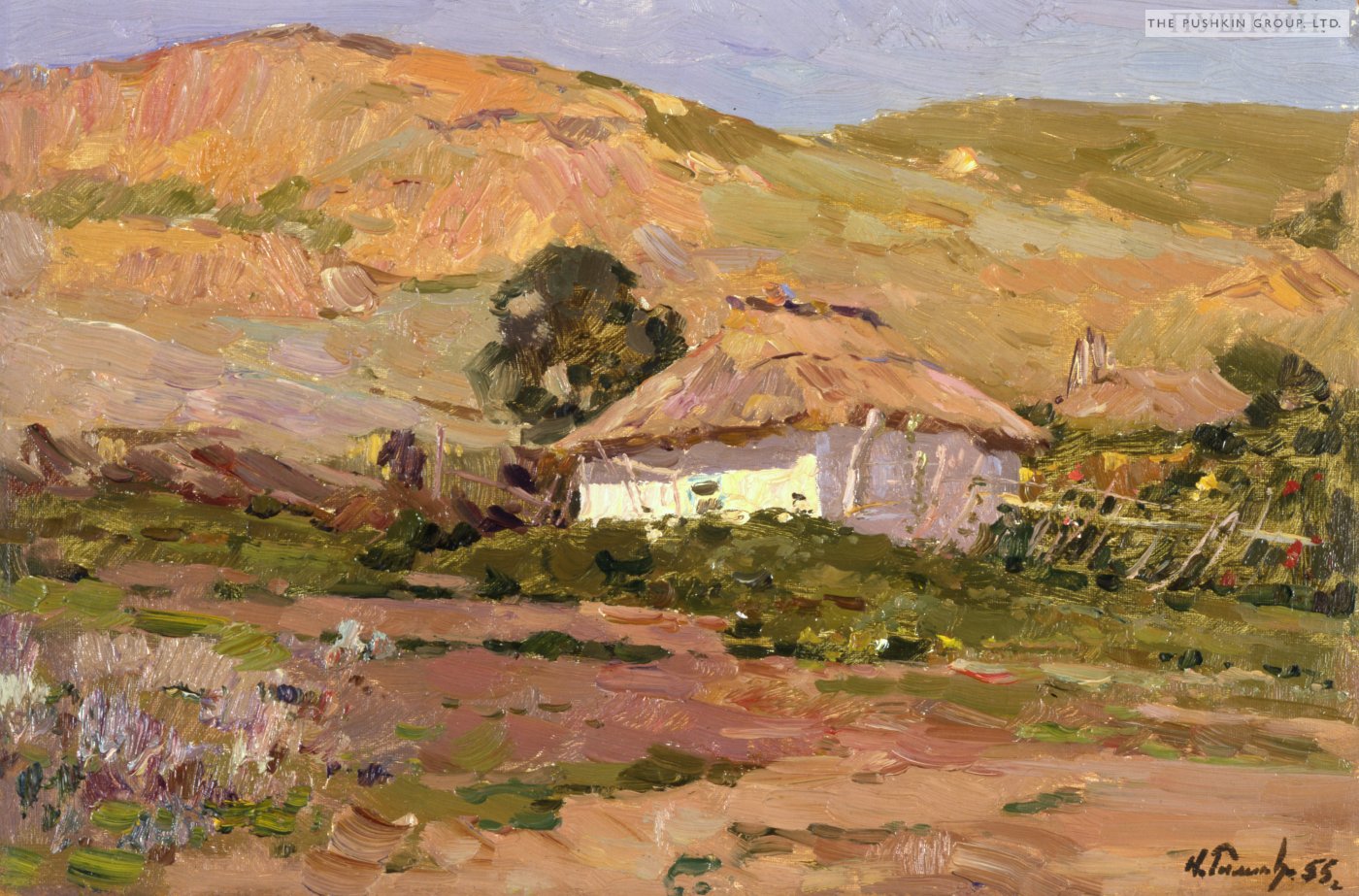
1955 / Oil on Panel / 7.00" x 10.00" (18cm x 25cm) -
Morning on the River
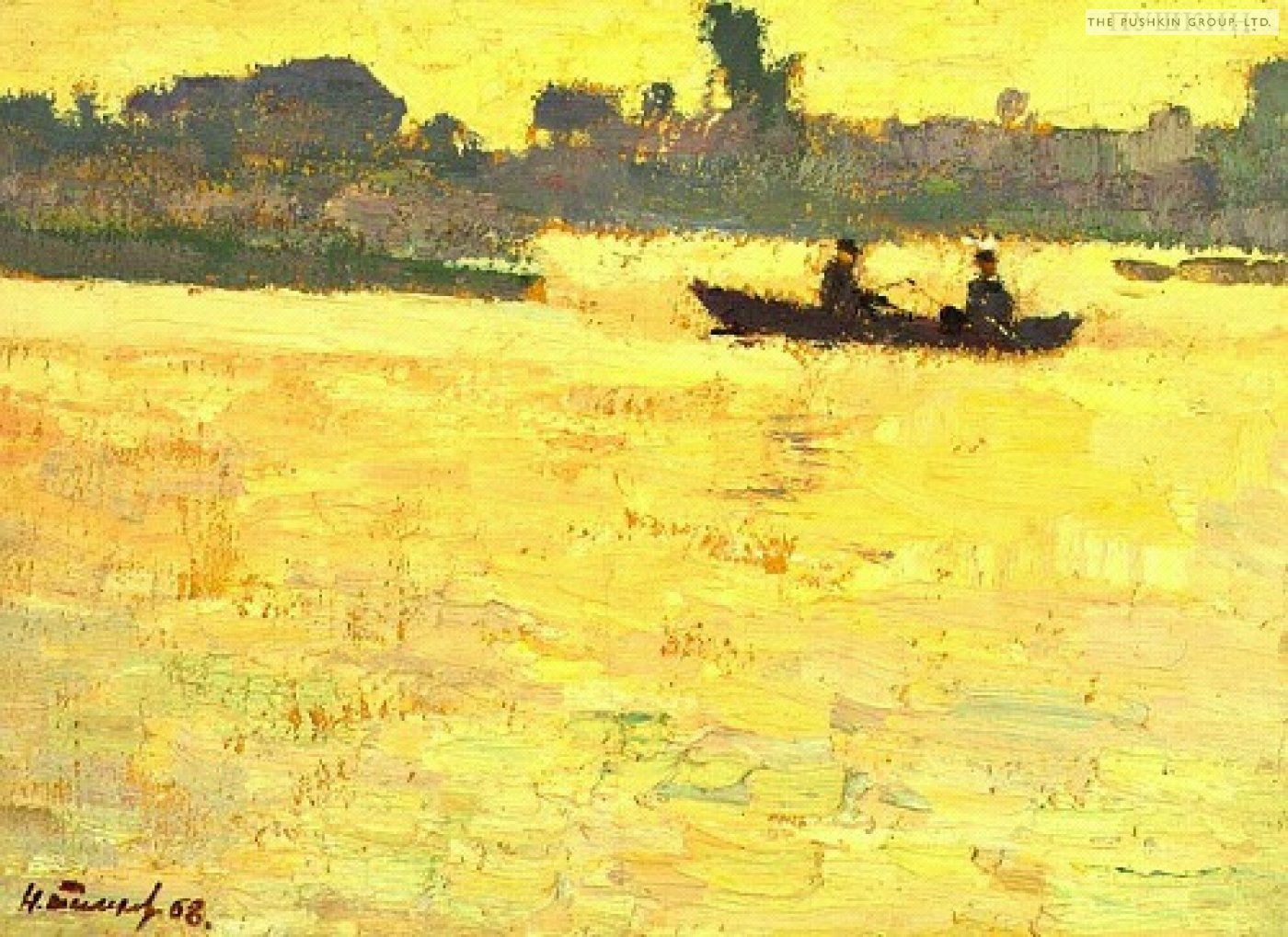
1968 / Oil on Panel / 8 x 10" -
Rocky Coast
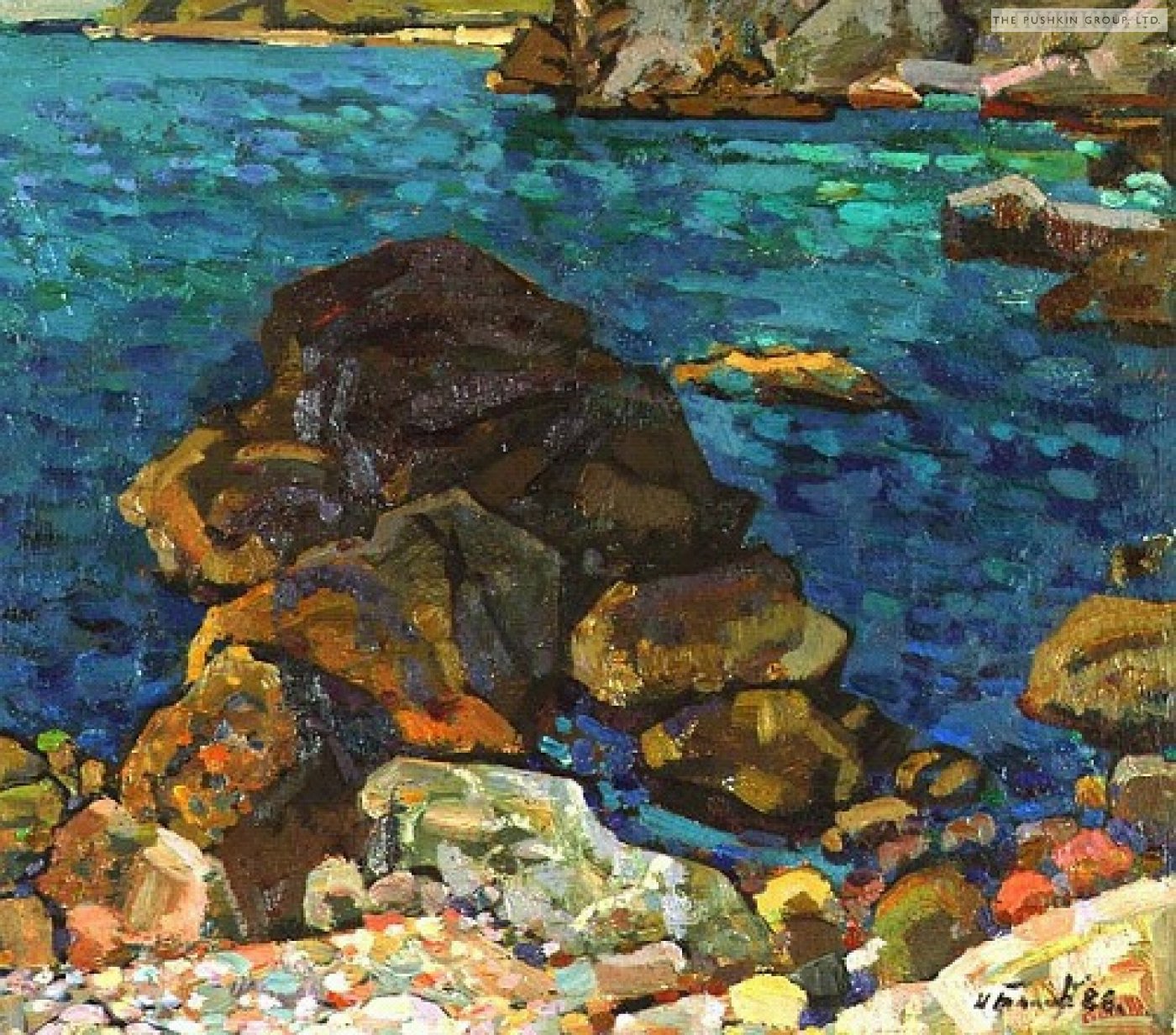
1986 / Oil on Panel / 12 x 14" -
Turning Colors
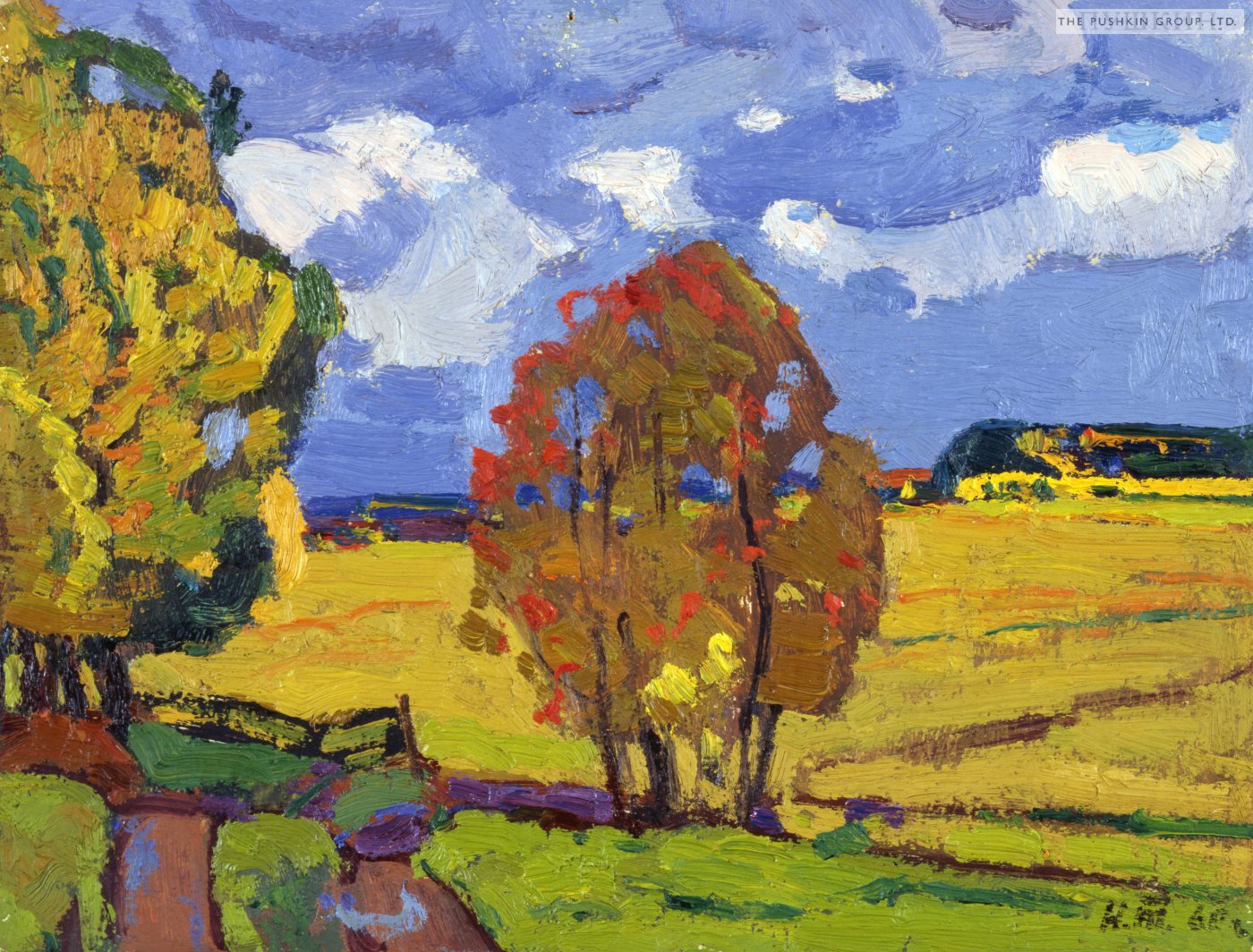
1960 / Oil on Panel / 8" x 10" (20cm x 25cm) -
Cabin in Hollow
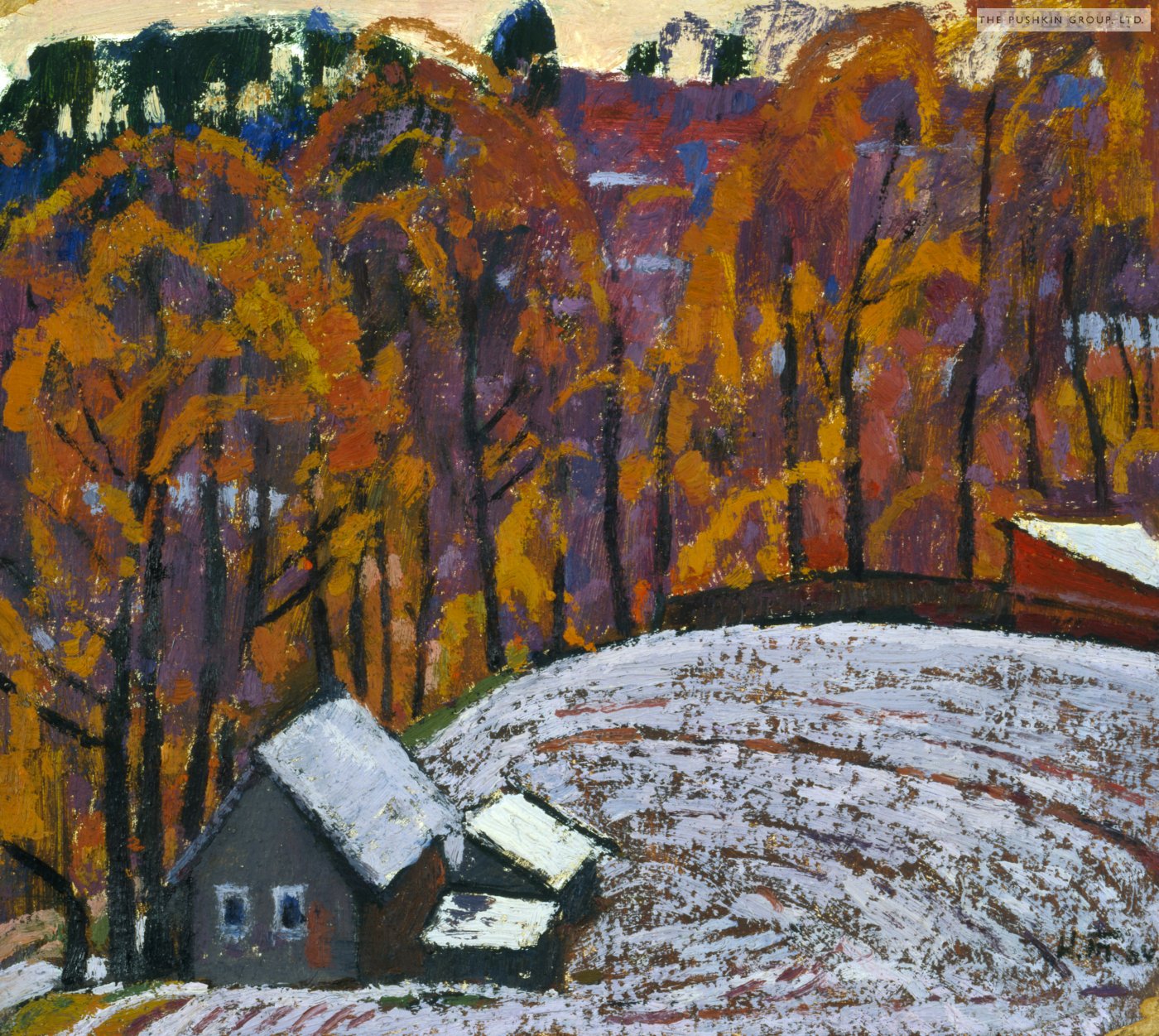
1964 / Oil on Panel / 9" x 10" (23cm x 25cm) -
On the Banks of Lake Mstino
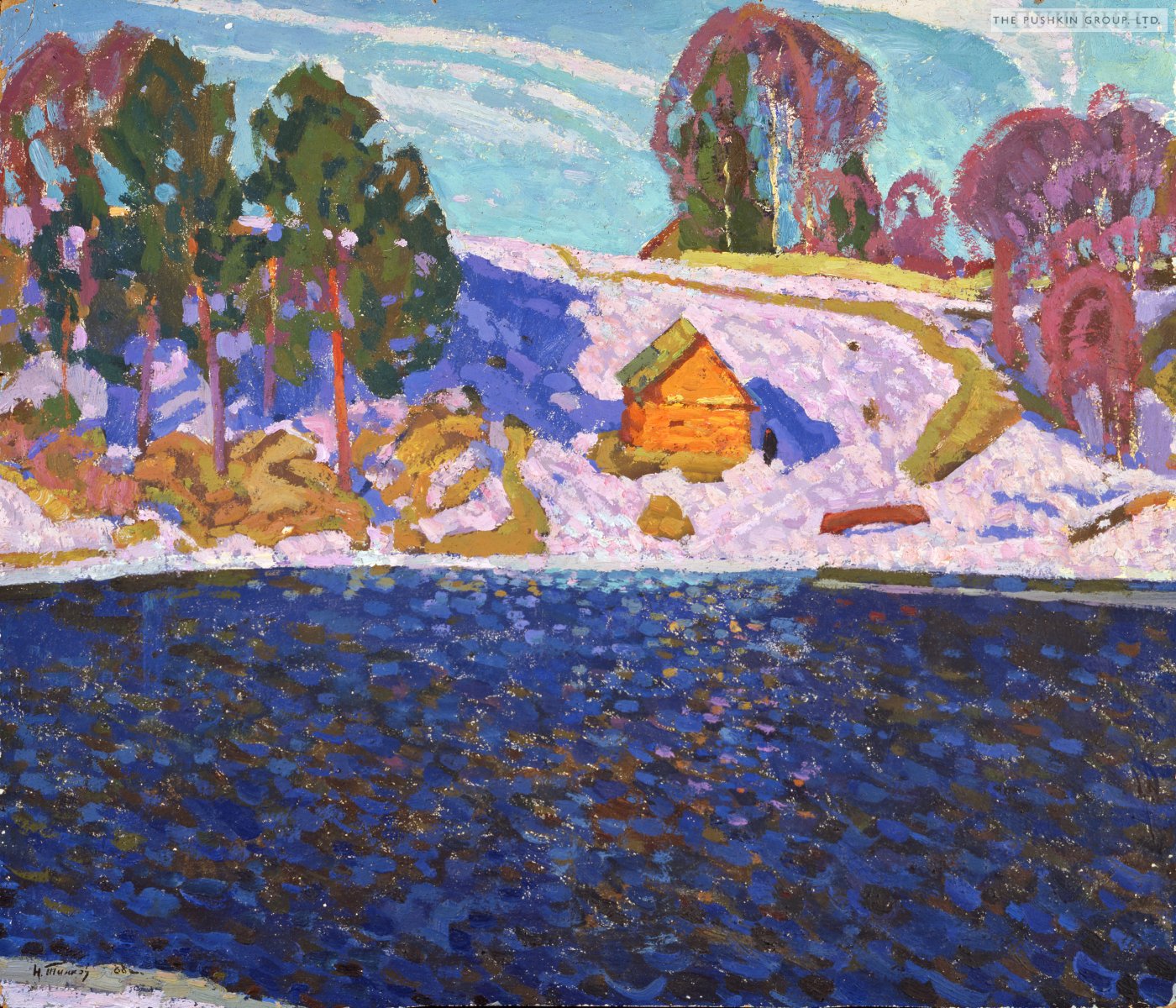
1968 / Oil on Panel / 20" x 23" (50cm x 58cm) -
Flowering Wetlands
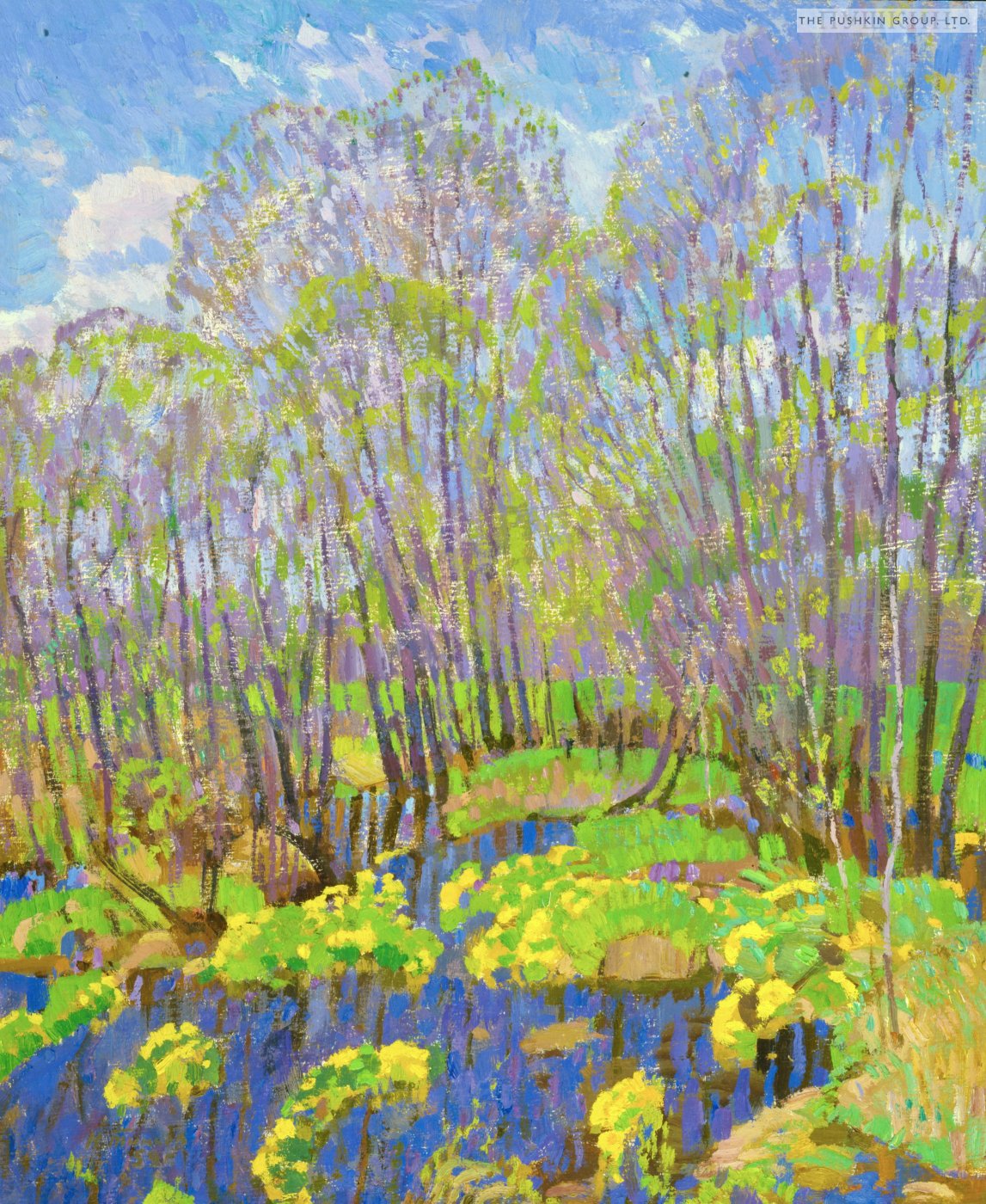
1959 / Oil on Board / 24" x 20" (60cm x 50cm) -
Morning Reflection
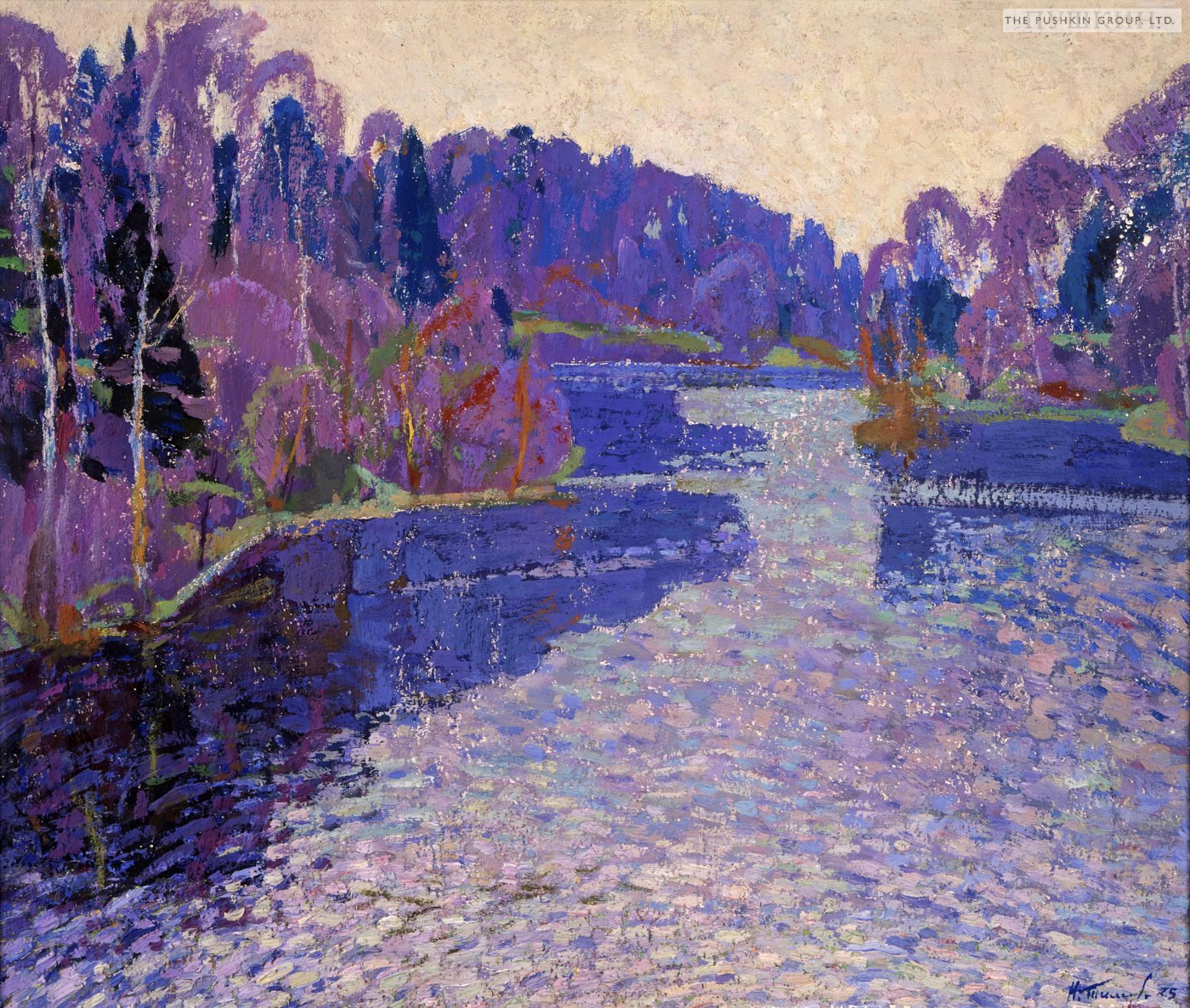
1975 / Oil on Panel / 20" x 24" (50cm x 60cm) -
Golden Rye
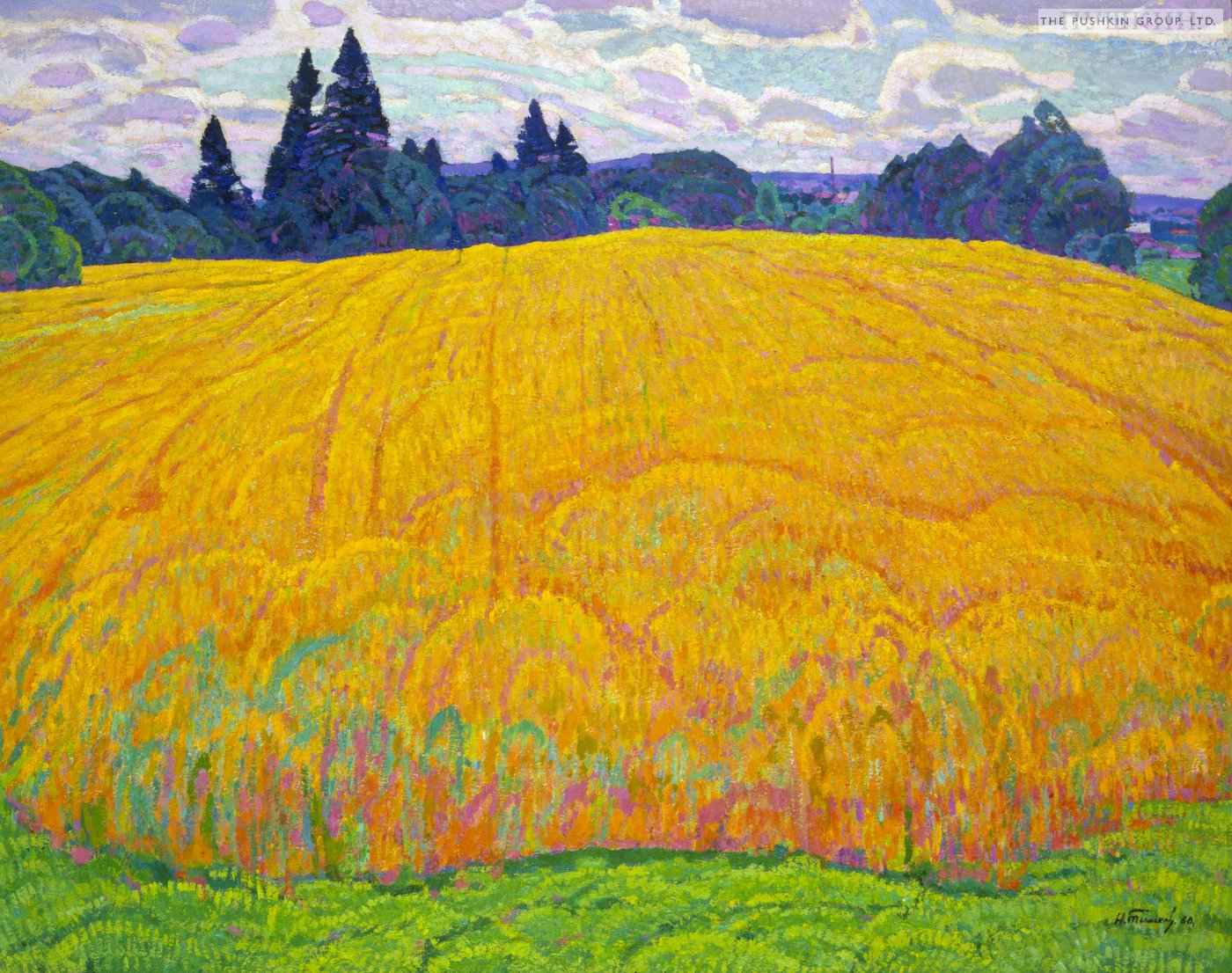
1960 / Oil on Panel / 31" x 39" (78cm x 98cm) -
Vyra Landscape
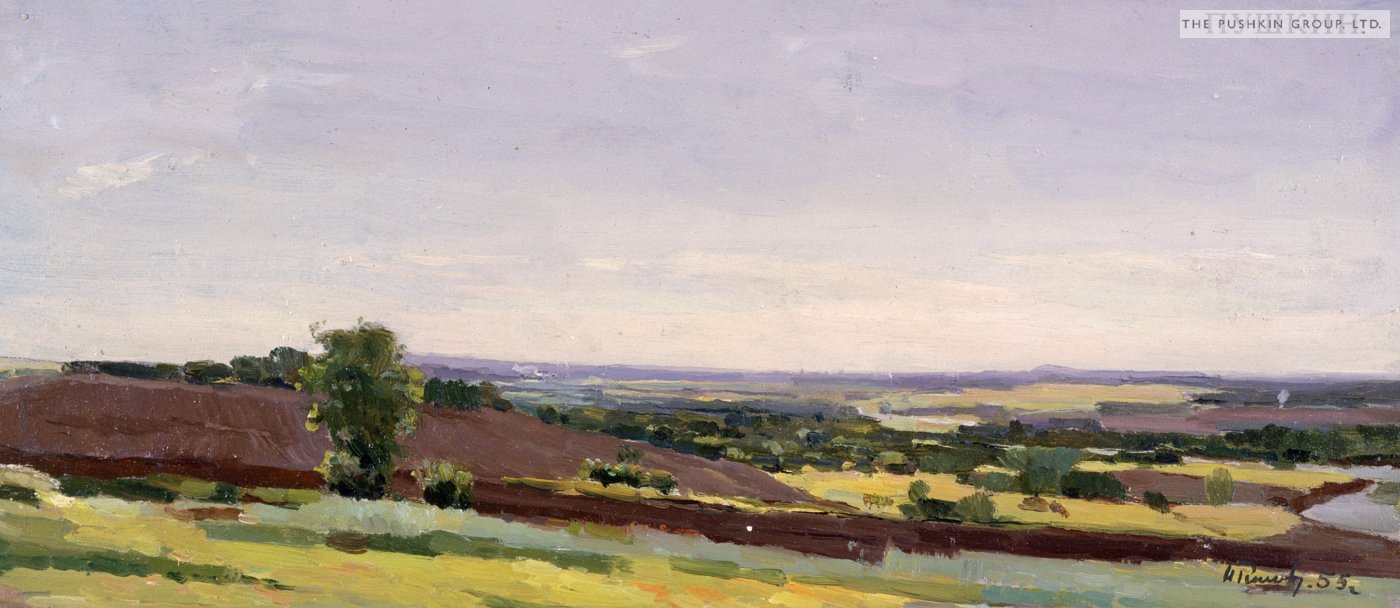
1955 / Oil on Panel / 7" x 16" (18cm x 40cm) -
April on the River
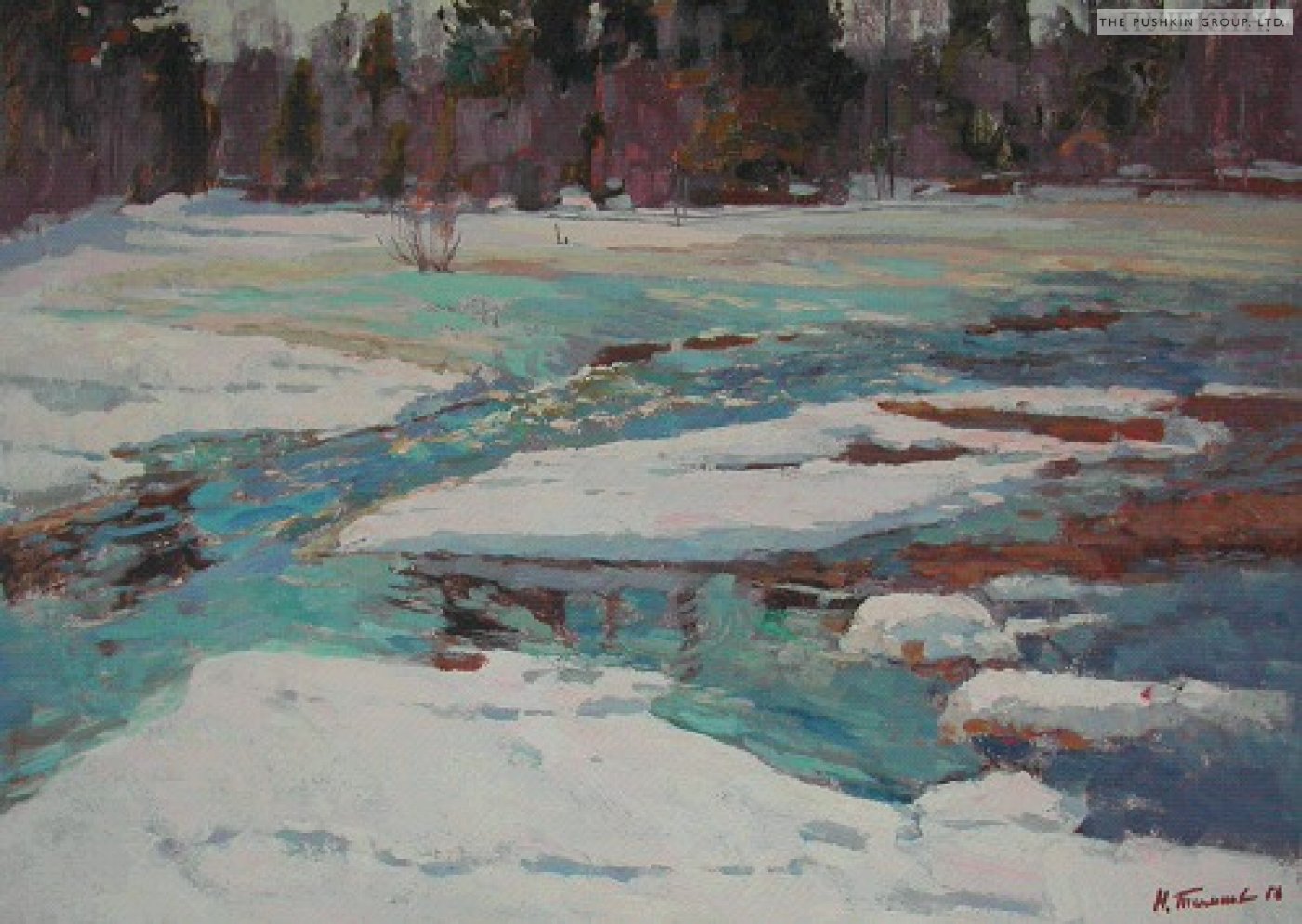
1956 / Oil on Panel / 20 x 28" -
Beauty of Spring
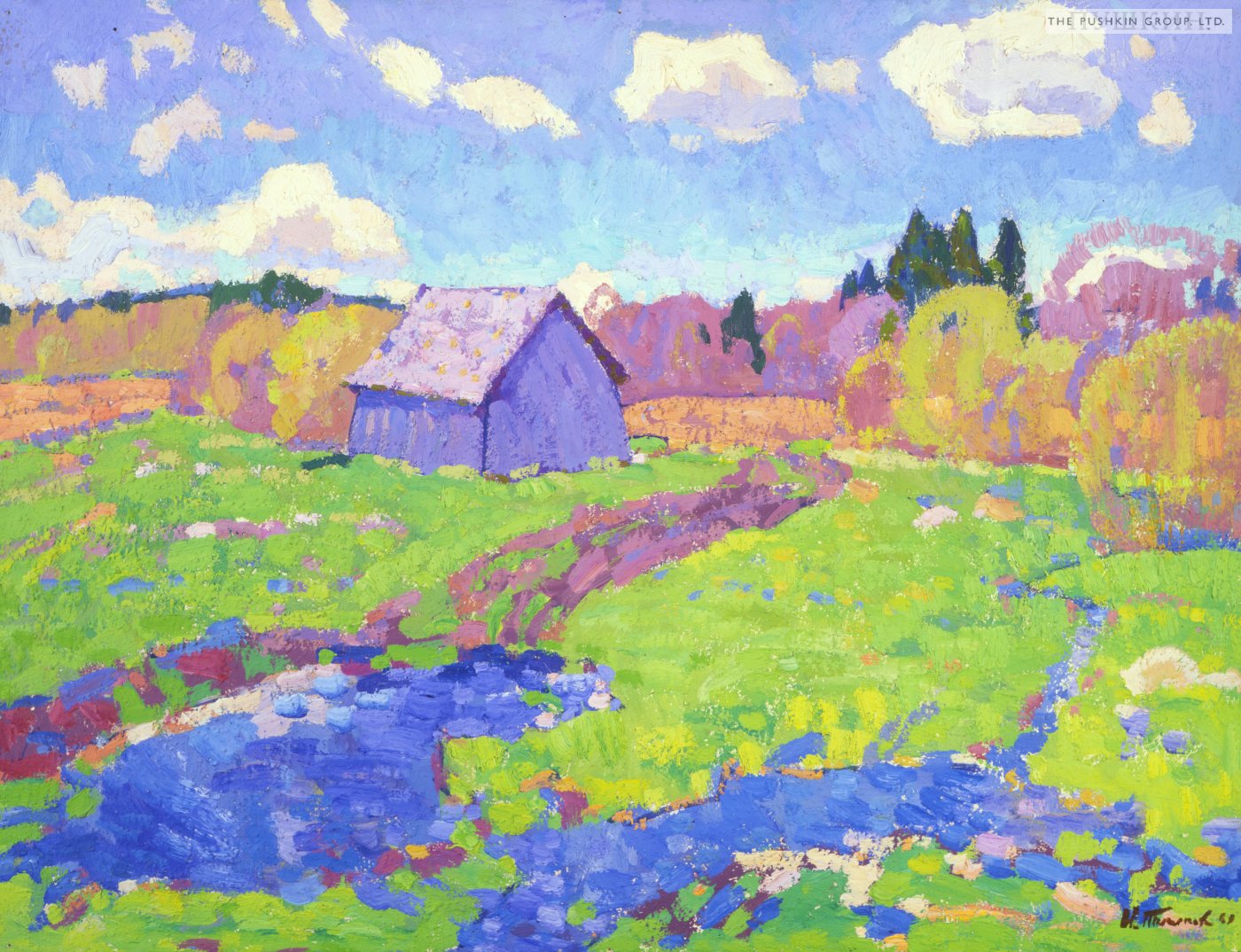
1969 / Oil on Panel / 20" x 26" (50cm x 65cm) -
Farmstead
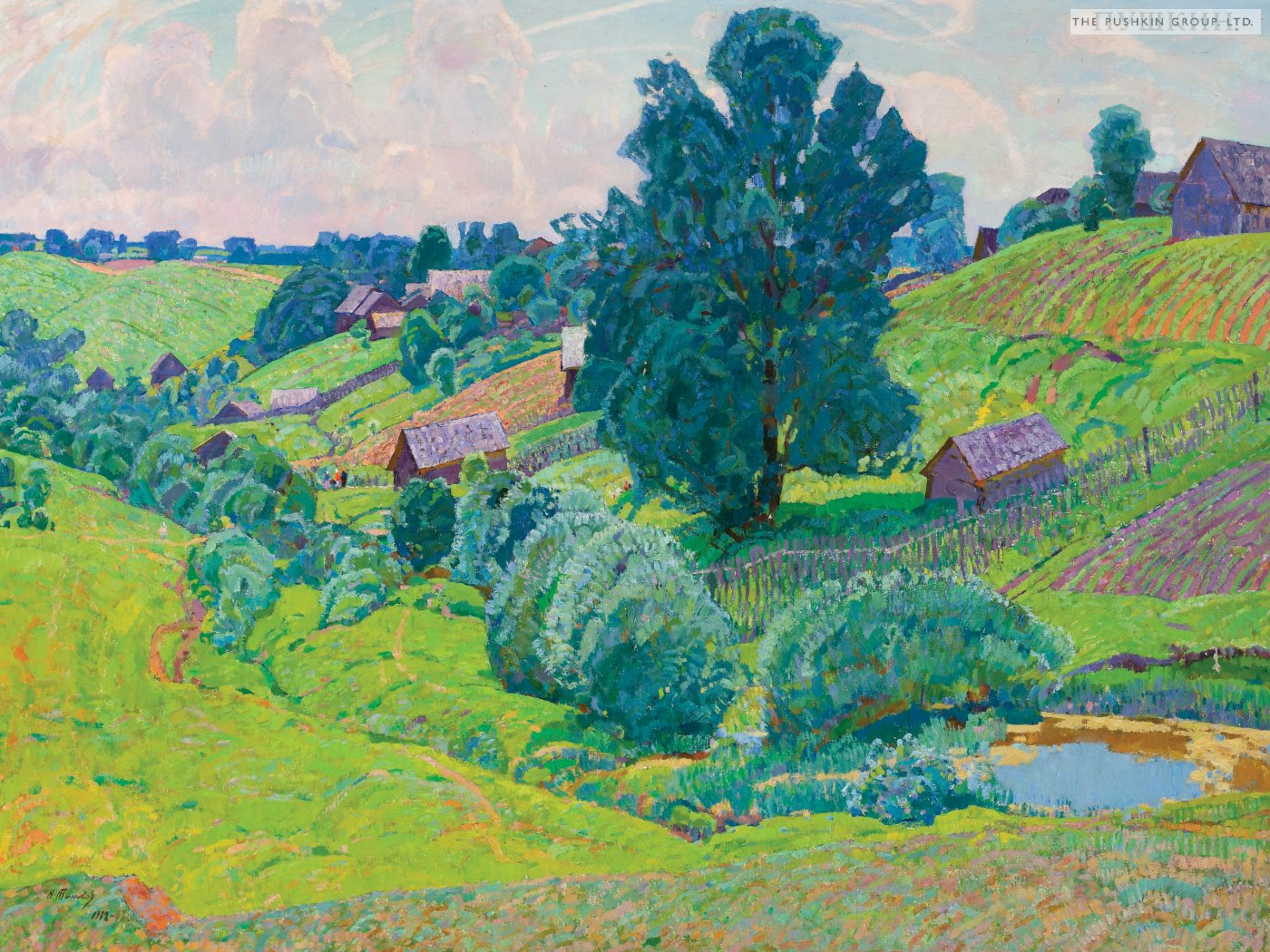
1972 / Oil on Canvas / 42" x 56" (105cm x 140cm) -
Winters Golden Sun
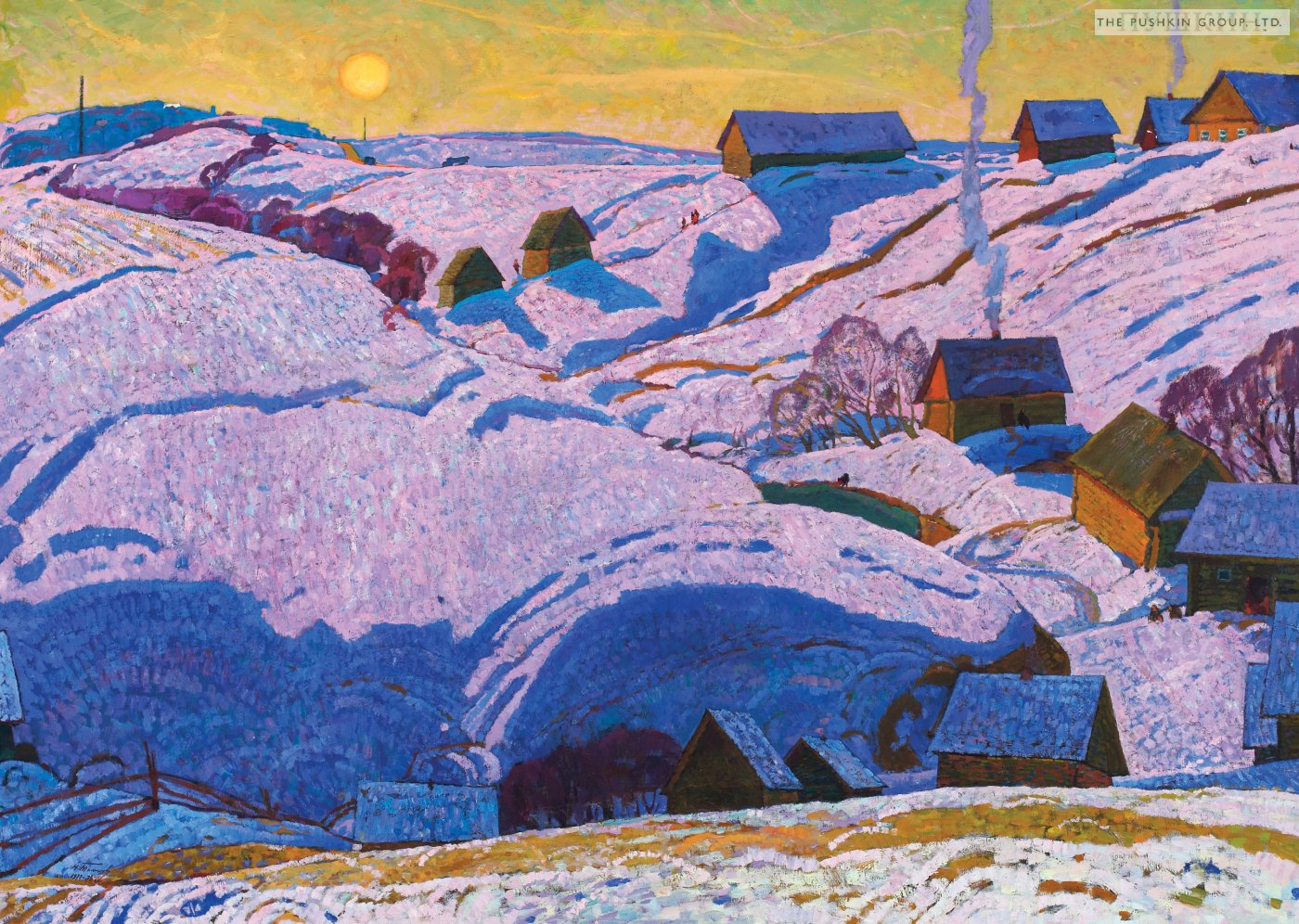
1971 / Oil on Canvas / 59" x 81" (148cm x 204cm) -
Catherines Summer Gardens, St. Petersburg
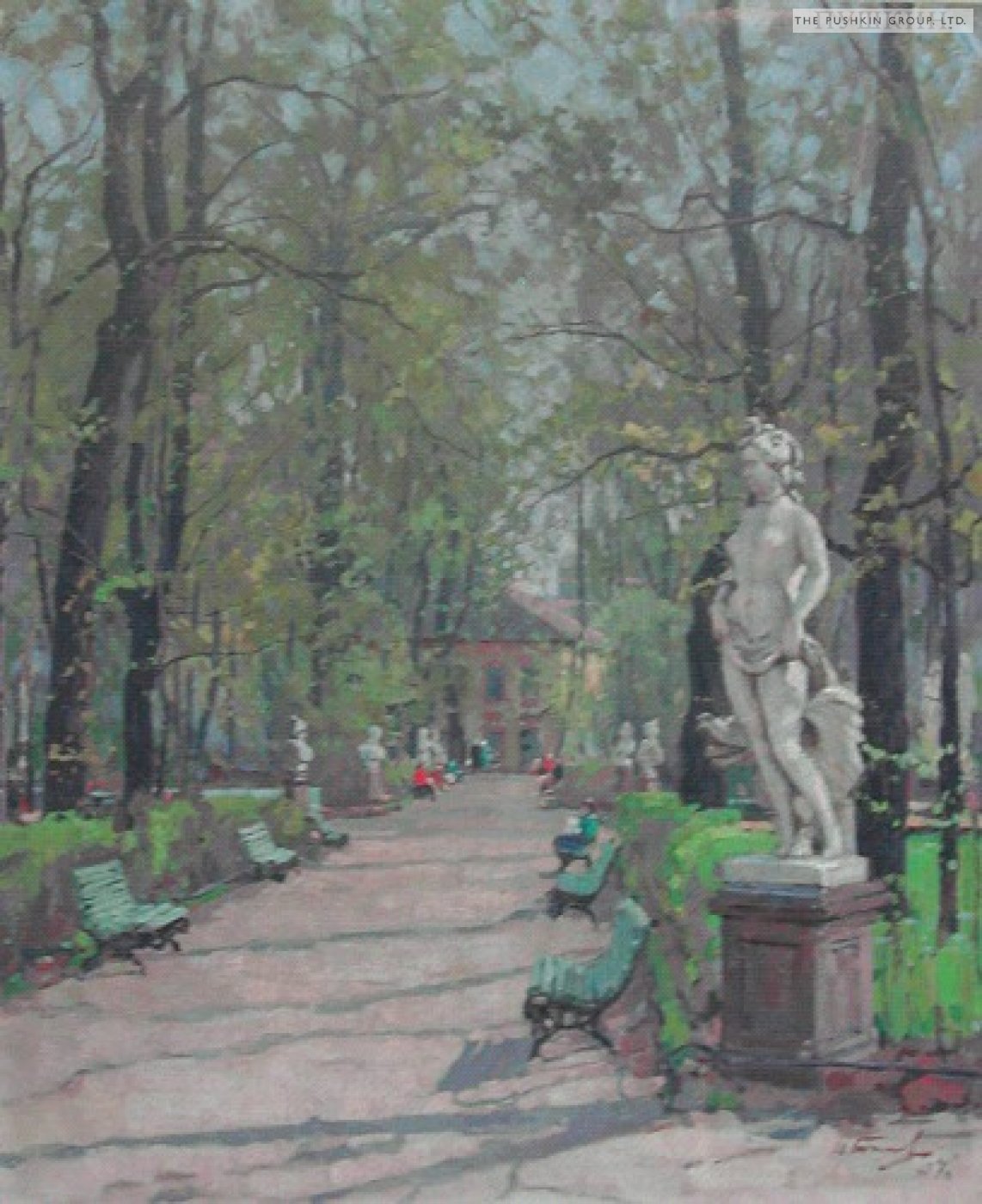
1957 / Oil on Canvas / 24 x 19" -
Bab'ye Leto (Indian Summer)
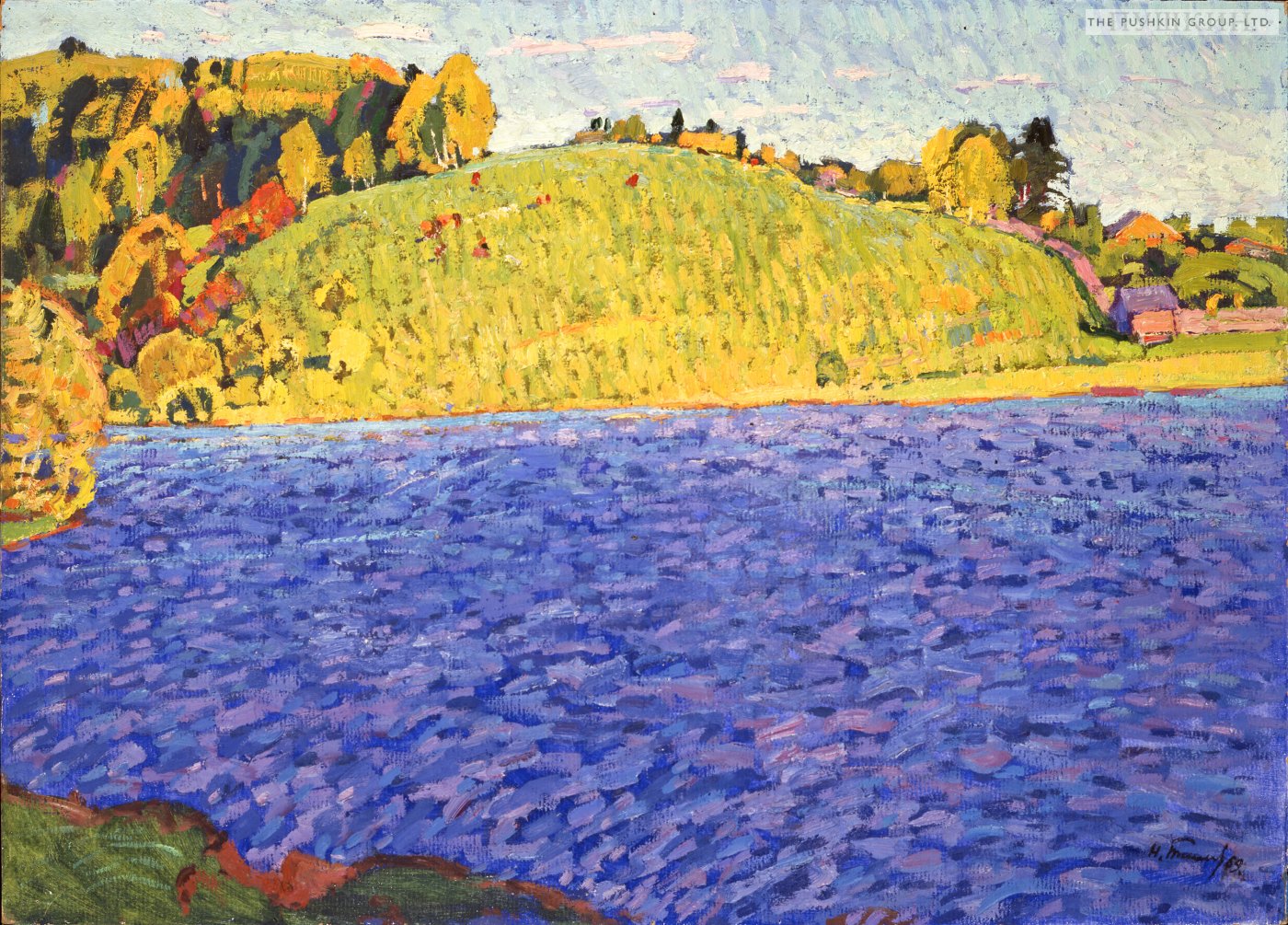
1969 / Acrylic on Canvas / 21.00" x 29.00" (53cm x 73cm) -
Fields in May
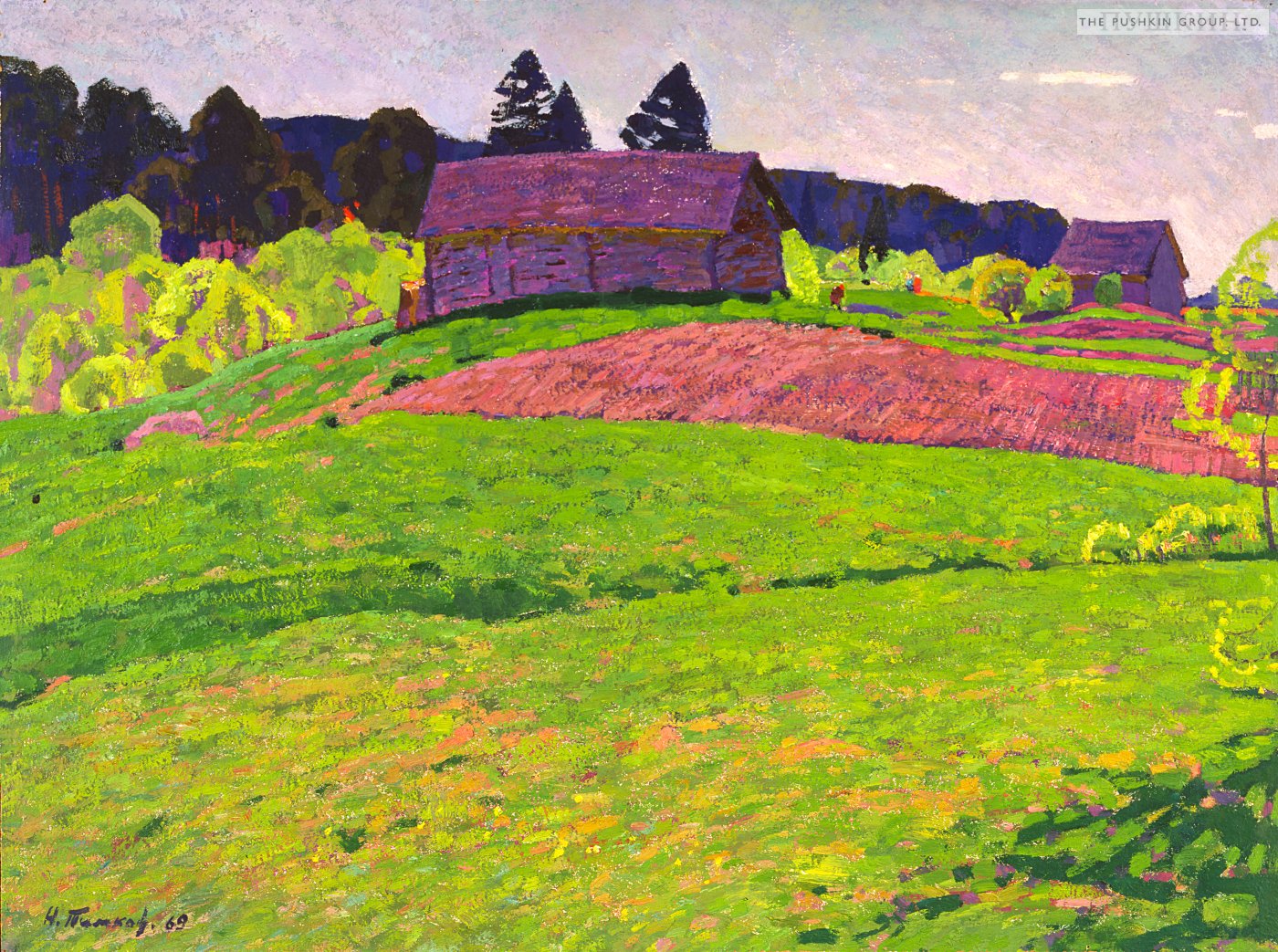
1969 / Oil on Panel / 20" x 28" (50cm x 70cm) -
Summer Harvest
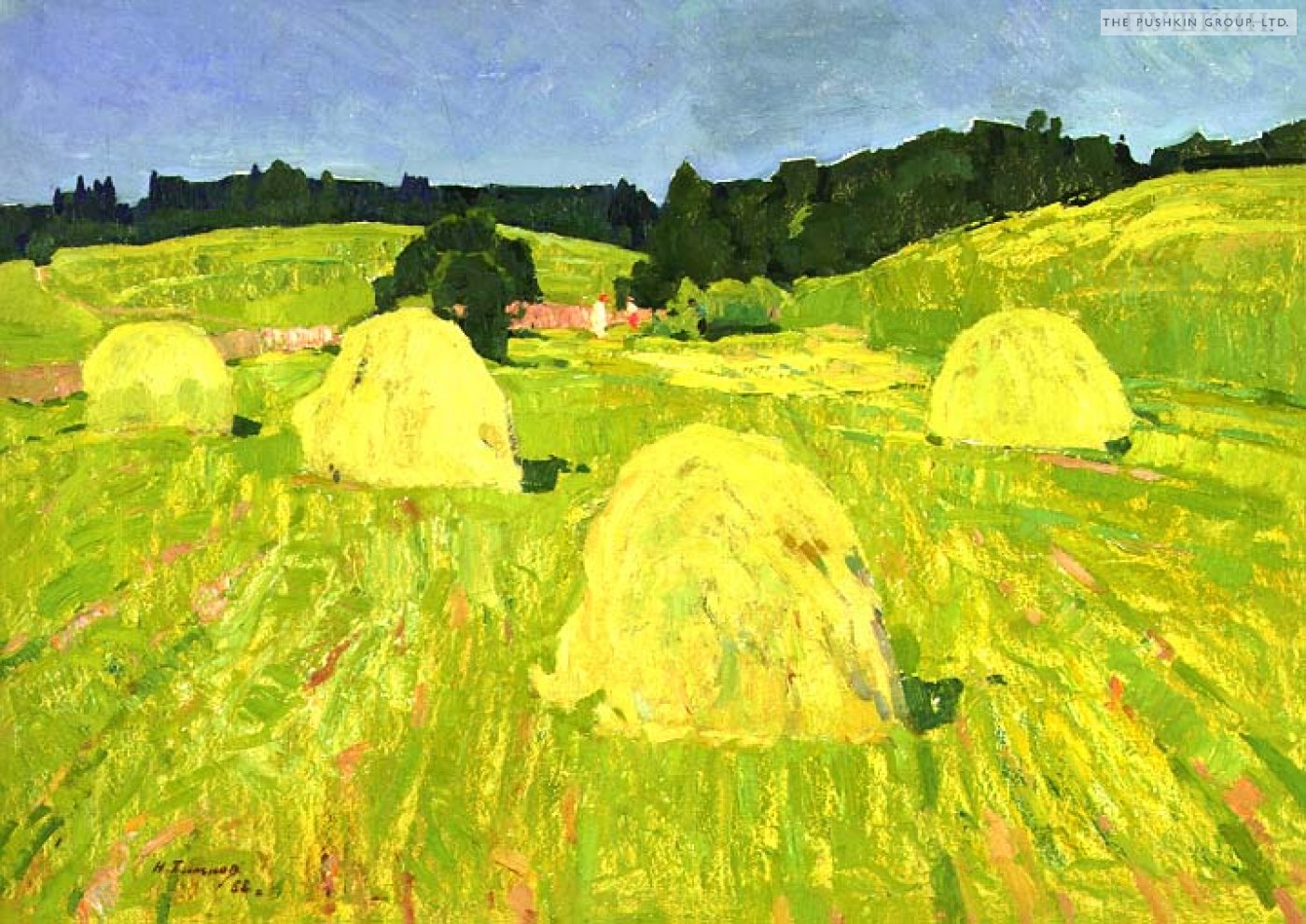
1968 / Oil on Panel / 20 × 27.25 inches -
Snowy Night
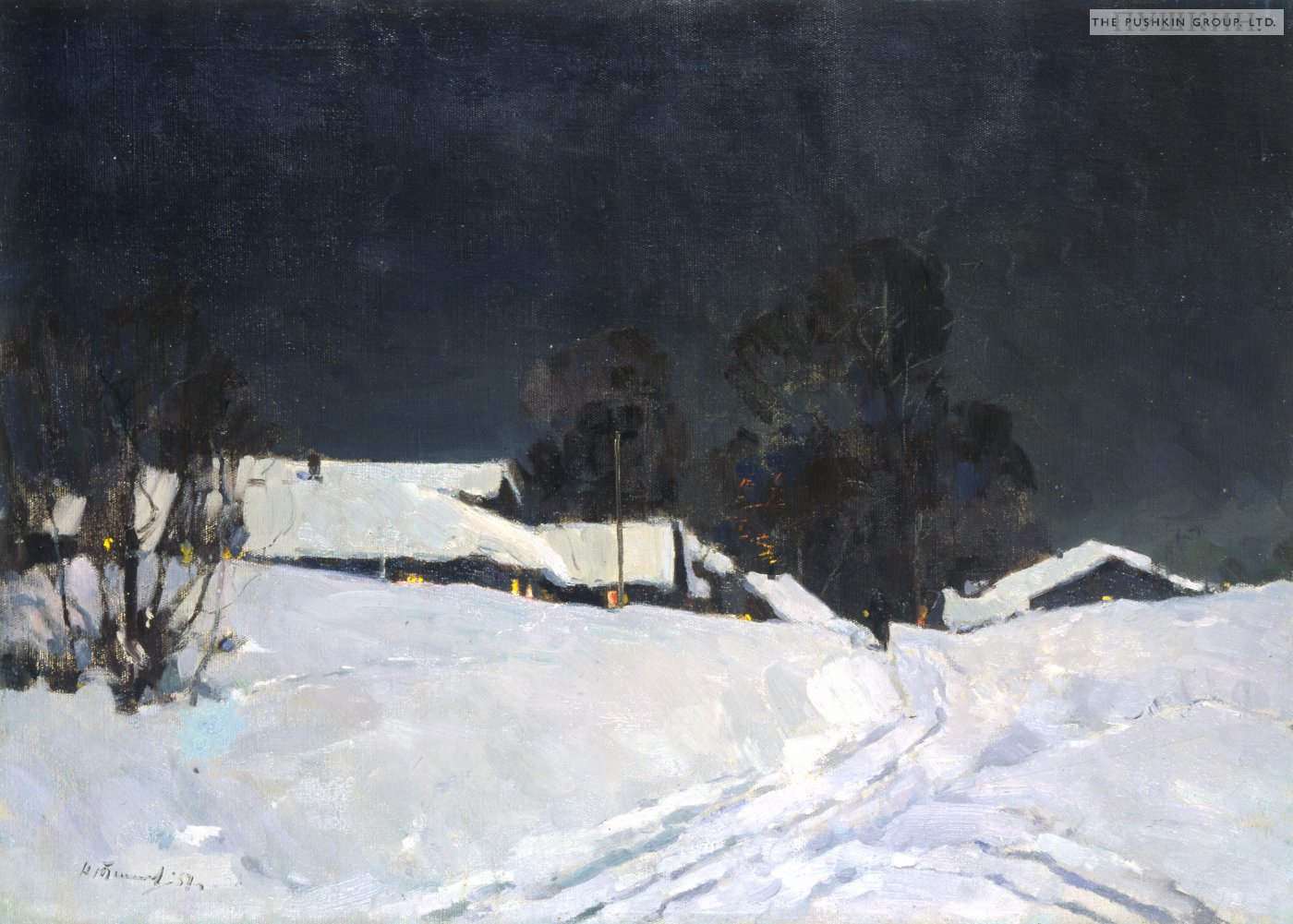
1957 / Oil on Canvas / 20" x 28" (50cm x 70cm)
-
January in Staraya Ladoga
![]()
1963 / Oil on Panel / 19 x 29"
No. KP0202E -
Snowy Saturday
![]()
1979 / Oil on Panel / 20" x 25" (50cm x 63cm)
No. NTK232E -
Birch Knoll
![]()
1962 / Oil on Panel / 10" x 7" (25cm x 18cm)
No. KP0244E -
Banks of the Oredesh
![]()
1952 / Oil on Panel / 6.00" x 9.00" (15cm x 23cm)
No. NTK290E -
Sunlit Dacha
![]()
1961 / Oil on Panel / 21 x 29"
No. NTK203 -
Flowering Apple Orchard
![]()
1978 / Oil on Panel / 20" x 24" (50cm x 60cm)
No. NTK210 -
Winter Sunset
![]()
1958 / Oil on Panel / 8 x 10" (20 x 30cm)
No. NTK217 -
Autumn Spirit
![]()
1970 / Oil on Panel / 10 x 10"
No. NTK222 -
Rustic Creek
![]()
1963 / Oil on Panel / 12 x 11"
No. NTK227 -
November Waters
![]()
1967 / Oil on Panel / 20.00" x 29.00" (50cm x 73cm)
No. NTK253 -
Snow Laden Orchard
![]()
1964 / Oil on Canvas / 14" x 20" (35cm x 50cm)
No. NTK259 -
Birch Trees
![]()
1970 / Oil on Panel / 27" x 21" (68cm x 53cm)
No. NTK263 -
Afternoon in Rostov
![]()
1970 / Oil on Panel / 20 x 28" (50cm x 70cm)
No. NTK268 -
The Crossing
![]()
1966 / Oil on Panel / 19 x 28"
No. NTK269 -
Cottage in Krimea
![]()
1955 / Oil on Panel / 7.00" x 10.00" (18cm x 25cm)
No. NTK271 -
Morning on the River
![]()
1968 / Oil on Panel / 8 x 10"
No. NTK273 -
Rocky Coast
![]()
1986 / Oil on Panel / 12 x 14"
No. NTK301 -
Turning Colors
![]()
1960 / Oil on Panel / 8" x 10" (20cm x 25cm)
No. NTK322 -
Cabin in Hollow
![]()
1964 / Oil on Panel / 9" x 10" (23cm x 25cm)
No. NTK325 -
On the Banks of Lake Mstino
![]()
1968 / Oil on Panel / 20" x 23" (50cm x 58cm)
No. NTK327 -
Flowering Wetlands
![]()
1959 / Oil on Board / 24" x 20" (60cm x 50cm)
No. NTK328 -
Morning Reflection
![]()
1975 / Oil on Panel / 20" x 24" (50cm x 60cm)
No. NTK329 -
Golden Rye
![]()
1960 / Oil on Panel / 31" x 39" (78cm x 98cm)
No. NTK330 -
Vyra Landscape
![]()
1955 / Oil on Panel / 7" x 16" (18cm x 40cm)
No. NTK401 -
April on the River
![]()
1956 / Oil on Panel / 20 x 28"
No. NTK446 -
Beauty of Spring
![]()
1969 / Oil on Panel / 20" x 26" (50cm x 65cm)
No. NTK447 -
Farmstead
![]()
1972 / Oil on Canvas / 42" x 56" (105cm x 140cm)
No. NTK449 -
Winters Golden Sun
![]()
1971 / Oil on Canvas / 59" x 81" (148cm x 204cm)
No. NTK451 -
Catherines Summer Gardens, St. Petersburg
![]()
1957 / Oil on Canvas / 24 x 19"
No. NTK501 -
Bab'ye Leto (Indian Summer)
![]()
1969 / Acrylic on Canvas / 21.00" x 29.00" (53cm x 73cm)
No. NTK285 -
Fields in May
![]()
1969 / Oil on Panel / 20" x 28" (50cm x 70cm)
No. NTK213E -
Summer Harvest
![]()
1968 / Oil on Panel / 20 × 27.25 inches
No. NTK211E -
Snowy Night
![]()
1957 / Oil on Canvas / 20" x 28" (50cm x 70cm)
No. NTK267e
































